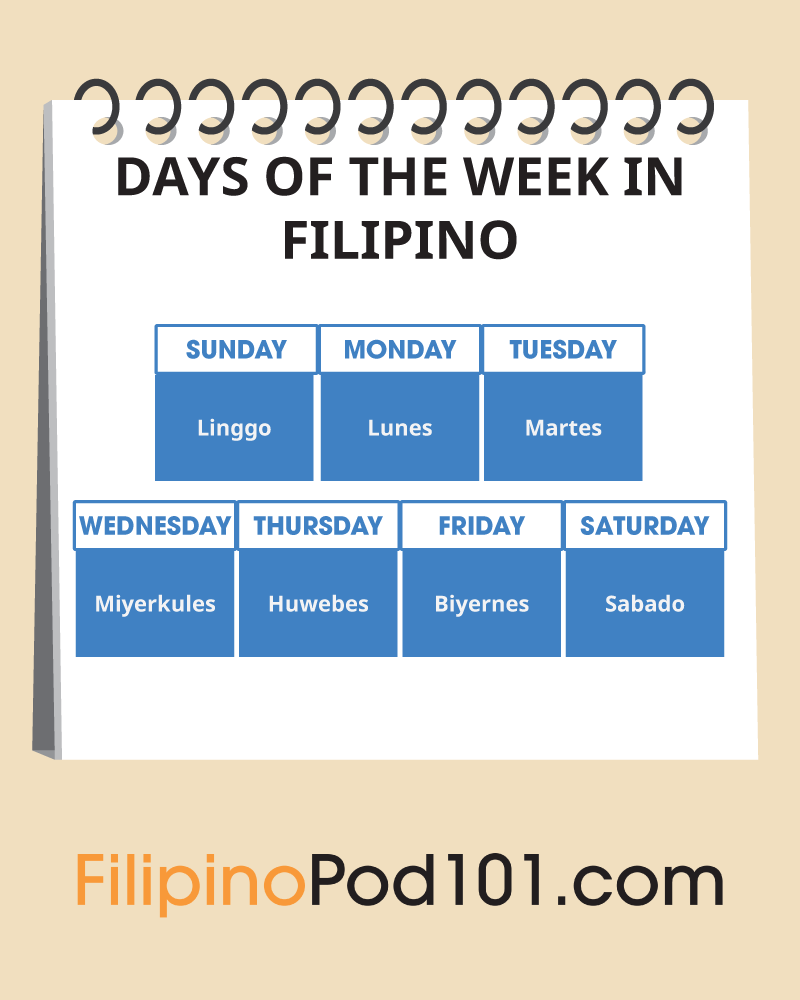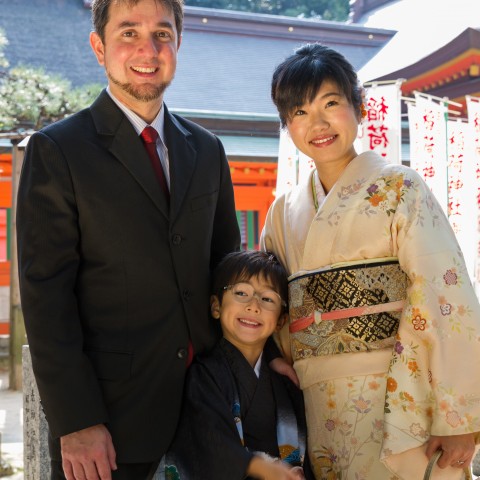
Filipinos are known for following “Filipino Time” (also referred to as “late” in other countries). Despite that, there are still many people in the Philippines who are very much time-conscious.
As a matter of fact, the Department of Science and Technology initiated a campaign called “Juan Time” several years ago with the aim of promoting the nationwide use of Philippine Standard Time.
That’s good news for anyone who values time. But what does this have to do with this post? Well, in this post, we’re going to learn how to tell the Philippines’ time, using the Filipino language, of course.
Knowing how to read and tell time is a basic universal skill. And yes, learning how to tell time in Filipino or Tagalog is as easy as 1-2-3. You can always read and tell time in English when you’re in the Philippines, since most Pinoys can understand English anyway. But it’s no question that knowing how to tell time in Tagalog has many benefits and advantages.
 Table of Contents
Table of Contents
- How to Ask for the Time
- How Pinoys Tell Time
- Hours Divided into Minutes
- Time Adverbs
- Common Filipino Proverbs about Time
- Conclusion
1. How to Ask for the Time

Knowing how to ask for the time is just as important as knowing how to read and tell time. Before anything else, let’s first learn how to ask for the time in Filipino.
There are different ways you can ask this. Here are some of them:
1 – What time is it?
Anong oras na?
This is the most straightforward way of asking “What time is it?“ in Filipino. It’s rather informal and less polite. You can use this approach when asking someone you’re familiar with, like a friend or colleague. Never ask this way when talking to someone in authority, though.
2 – Do you know what time it is?
Alam mo ba kung anong oras na?
This is a more polite approach, although it’s not that formal. You can use this question when asking someone you’re not too familiar with, such as a stranger.
If you want a more polite approach, then use this one:
3 – May I know what time it is already?
Maaari/Pwede ko bang malaman kung anong oras na?
If you’re asking an older person or a person in authority, simply add the word po right after ko.
4- Asking What Time Something Will Start or What Time Something Happened
Now, if you want to ask what time something will start, you can simply say: Anong oras magsisimula ang palabas? (“What time will the show start?”)
More examples:
- “What time is the plane arriving?”
Anong oras dadating ang eroplano?
- “What time is the meeting scheduled?”
Anong oras ang schedule ng meeting?
- “What time did the game end last night?”
Anong oras natapos ang laro kagabi?
2. How Pinoys Tell Time
Marunong ka bang magbasa ng oras? Do you know how to tell time?
This is a question often asked of young Filipino kids. Just as in other countries, Pinoy kids are taught how to read time and dates at an early age.

In the Philippines, most people use the twelve-hour format. The Filipino word for “hour” is the same word used for “time,” which is oras. This is derived from ‘horas,’ the Spanish word for “time.”
Meanwhile, “o’clock“ in Tagalog is either la or las, both of which are Spanish for “the.”
There are two general ways of how to read time in Filipino. But before we go there, let’s talk about time markers first.
1- Time Markers
The basic time markers or references are as follows:
| Umaga | Morning |
| Tanghali | Noon |
| Hapon | Afternoon |
| Gabi | Evening |
| Hating-Gabi | Midnight |
| Madaling-Araw | Middle of the night |
A – Umaga
Umaga in the Philippines usually begins at 5:00 a.m., depending on what time the sun rises. The time between the rising of the sun and 11:59 a.m. is considered umaga or “morning.” When asked what time it is, and your watch says it’s 10:30 a.m., you respond by saying: Alas diyes y medya ng umaga.
In English, that translates to “10:30 in the morning.” In written form, that would be Alas-10 y medya n.u. N.u. is the abbreviation for ng umaga, or “in the morning.”
The same rule applies when telling time in Filipino at different times of the day.
B – Tanghali
Tanghali, on the other hand, is high noon, and is the time between 12:00 p.m. and 12:59 p.m. When reading time during tanghali, let’s say fifteen minutes past 12:00, you simply say:
Alas dose kinse ng tanghali.
(Written form: Alas-12 kinse n.t.), kinse being “fifteen” in Spanish.
If you’re not too familiar with Philippine history, the reason there are a lot of Spanish words and expressions in the Filipino language is that the country has been under Spanish rule for more than 300 years. So, don’t be surprised if you come across a number of loanwords in your studies.
Now, back to the lesson.
C – Hapon
Hapon is the Filipino word for “afternoon.” It’s the time between 1:00 p.m. and 5:59 p.m. In written form, it’s abbreviated as n.h., or ng hapon (“in the afternoon”). In Filipino, 3:00 p.m. is spoken as Alas tres ng hapon. and written as Alas-3 n.h.
D – Gabi
Gabi is the Filipino word for “evening.” You’ll know when it’s gabi in the Philippines once the clock strikes 6:00 p.m. Around this time, most Filipino families are already preparing for the evening meal. In the barrios, mothers are often heard yelling at their children to come home as it’s already dark.
- Mga anak, pasok na at alas sais na! Maghahapunan na tayo!
“Come home now kids! It’s 6 o’clock, and it’s already time for dinner!”
Gabi lasts from 6:00 p.m. until 12 a.m.

E – Hating-gabi
It’s already hating-gabi, or midnight, once the clock strikes 12 a.m. Unless you’re working night shift, there’s very little chance someone is going to ask you what time it is at this hour.

F – Madaling Araw
Madaling araw literally means “the day is breaking soon,” madali being “fast” and araw being “day.” As a time marker, however, this phrase translates to “in the middle of the night.” In Filipino, 4:00 a.m. is read as Alas kwatro ng madaling araw.
As mentioned, there are two general ways we tell time in the Philippines: the Filipino way and the Spanish way.
2- The Filipino Way
The Filipino way is a more formal approach to reading and telling time in the Filipino language. Let’s say it’s 10:00 a.m. and you’re asked what time it is. You reply with: a-a-sampu na ng umaga.
Here’s a table of how to say the time in Filipino for your reference:
| Time | In Filipino we say… |
|---|---|
| 1:00 | ika-isa |
| 2:00 | ikalawa |
| 3:00 | ikatlo |
| 4:00 | ikaapat |
| 5:00 | ikalima |
| 6:00 | ika-anim |
| 7:00 | ika-pito |
| 8:00 | ika-walo |
| 9:00 | ika-siyam |
| 10:00 | ika-sampu |
| 11:00 | ika-labing-isa |
| 12:00 | ika-labing-dalawa |
This is how we read exact hours in Filipino:
For 1:00 a.m., we say:
- Ang oras ay ika-isa ng umaga.
“The time is one o’clock in the morning.”
For 2:00 p.m., we say:
- Ang oras ay ikalawa ng hapon.
“The time is two o’clock in the afternoon.”
Minuto
What if the clock says it’s 4:15? That’s when we read in hours and minutes. “Minute“ in Filipino is minuto. When reading the time in hours and minutes, we simply read the equivalent of the minutes in words.
Example:
- “It’s five fifteen in the afternoon.”
Ang oras ay labinlimang minuto makalipas ang ikalima ng hapon.
Labinlima is Filipino for “fifteen,” while makalipas is Filipino for “past.” So that would be the same as saying, “The time is fifteen minutes past five in the afternoon.”
Speaking of which, learning simple numbers in Filipino is another crucial step in this study, so make sure you find ways to do so.
3- The Spanish Way
Alternatively, you can use the Spanish way of reading time. In the Philippines, this is the more practical and common way people read and tell time. You don’t normally hear people saying, Ang oras ay dalawampu’t-limang minuto makalipas ang ika-siyam ng umaga (“The time is twenty-five minutes past nine in the morning”) unless it’s the disc jockey announcing the time over your favorite A.M. or F.M. station.

So, when you ask a Filipino on the streets what time it is and it’s 5:15 p.m., you’ll most likely hear them respond with: Alas-singko kinse. The time marker, which in this case is ng hapon, is omitted unless the person asking has just awoken from a very long sleep over the weekend and has no idea what period of the day it is.
Menos
And then there’s the word menos, which is Spanish for “less.” In reading the time, we can use the term this way:
Ang oras ay menos kinse bago mag alas-kwatro.
That’s fifteen minutes “minus” or “less” four o’clock, and indicates that the time is a quarter to four or fifteen minutes before four.
Meanwhile, here’s another table for your reference. This time, it’s for the Spanish way of reading time:
| Time | Another way we read time in Filipino is… |
|---|---|
| 1:00 | ala-una |
| 2:00 | alas-dos |
| 3:00 | alas-tres |
| 4:00 | alas-kwatro |
| 5:00 | alas-singko |
| 6:00 | alas-sais |
| 7:00 | alas-siete |
| 8:00 | alas-otso |
| 9:00 | alas-nueve |
| 10:00 | alas-dies |
| 11:00 | alas-onse |
| 12:00 | alas-dose |
In order for you to be able to tell time in Filipino, you need to be familiar with Spanish numbers. This post might be able to help you with that.
3. Hours Divided into Minutes

Reading and telling time in Filipino when hours are divided into minutes is also straightforward, although most Pinoys never read time in this manner.
1- Quarter
The direct equivalent for the word “quarter” in Tagalog is kwarter, but it’s not a commonly used word. That said, “It’s a quarter past seven in the evening,” is read as Alas-siete kinse ng gabi.
To be more formal, you can say: Ang oras ay labinlimang minuto makalipas ang alas-siete ng gabi.
2- Half
The Filipino word for “half” is kalahati. When reading 8:30 p.m., you say: Alas-otso y medya ng gabi. Or, in the more formal manner: Ang oras ay kalahating oras/tatlumpong minuto makalipas ang ika-walo ng umaga.
4. Time Adverbs
Using an adverb of time in Filipino when giving the time is very useful. There are a lot of time adverbs available, but we’ll give you a list of only the most commonly used time adverbs in Filipino, with examples of how to use them.
1 – Now/Right Now (Ngayon)
- Anong oras na ngayon?
“What time is it now?”
2 – Currently (Kasalukuyan)
- Ang oras sa kasalukuyan ay sampung minuto makalipas ang ika-siyam ng umaga.
“The current time is ten minutes past nine in the morning.”
3 – Today (Ngayon/Ngayong araw)
- Anong oras ka pupunta doon ngayong araw?
“What time are you going there today?”
4 – Yesterday (Kahapon)
- Pasado alas dose ng tanghali sila umalis kahapon.
“They left past twelve noon yesterday.”
5 – Tomorrow (Bukas)
- May deyt sila bukas ng gabi.
“They’ll have a date tomorrow evening.”

6 – Before (Bago)
- Pinalampas ko ang alas otso ng umaga bago magluto ng agahan.
“I waited until past eight in the morning before deciding to cook breakfast.”
- Limang minuto na lang bago mag alas-dose ng hating-gabi.
“There’s only five minutes left before twelve midnight.”
7 – After (Pagkatapos)
- Sinundo siya ng drayber pagkatapos niyang tawagan ito ng pasado alas tres ng hapon.
“The driver fetched her after she phoned him at past three in the afternoon.”
8. Soon/As soon as possible (Sa lalong madaling panahon)
- Kailangan nilang tapusin ang proyekto sa lalong madaling panahon.
“They need to finish the project as soon as possible.”
9. Later (Mamaya)
- Manonood kami ng sine mamaya.
“We’re going to watch a movie later.”
10. In a while/Shortly (Maya-maya/Sa ilang sandali)
- Nandiyan na ako maya-maya.
“I’ll be there in a while.”
- Lalapag na ang eroplano sa ilang sandali.
“The plane will be landing shortly.”
5. Common Filipino Proverbs about Time

There aren’t a lot of time proverbs in the Philippines, but the few that are there truly echo how Filipinos are supposed to value time. Here are some of them:
1 – “The early comer is better than the hard worker.”
Daig ng maagap ang masipag.
This is a critique against the habit of many Filipinos of being late to meetings and appointments. It suggests that a person who’s always on time will always beat a person who’s more talented but never comes on time.
2 – “Time is gold.”
Ang oras ay ginto.
This doesn’t need much explanation. Time is valuable and must not be wasted.
3 – “Do today what you can do tomorrow.”
Gawin ngayon ang kaya mong gawin bukas.
Filipinos are known to be procrastinators, and are thus said to possess the mañana habit attitude. Mañana is a Spanish word that describes an indefinite time in the future. This proverb is targeted at those who have a habit of saying mamaya na or “later” when asked to work on an important task.
These next two sayings are related to the first three. They’re designed to encourage Filipinos not to put off doing something important—or they may regret their actions in the end.
4 – “Opportunity knocks but once. Grasp it before it disappears.”
Isang beses lang kumatok ang pagkakataon. Hawakan nang mahigpit bago pa ito maglaho.
5 – “What good is grass if the horse is dead?”
Aanhin pa ang damo kung patay na ang kabayo?
6. Conclusion
As promised, learning how to tell time in Filipino is trouble-free. Sure, you’ll need to learn a few basic Spanish terms (or English if it’s not your first language), but overall, it’s not very complicated. However, to accurately tell time—or both the date and time in the Philippines—you’ll need to take your ability to read and speak the Filipino or Tagalog language up a notch.
One way you can do this is through FilipinoPod101, an online portal that provides students who wish to learn Filipino with a way to learn the language and culture of the Philippines in a systematic yet fun and convenient manner. FilipinoPod101 can provide you with countless video lessons if you’re a visual learner, as well as audio tools if you’re the type who loves learning through listening. Most importantly, it gives you the opportunity to learn the Filipino language on your own. We hope you’ll continue to let us join you on your language-learning journey!
Before you go, let us know in the comments what time it is where you are, in Filipino! We look forward to hearing from you.

Essential Vocabulary for Directions in Filipino

Do you know your left from your right in Filipino? Asking for directions can mean the difference between a heavenly day on the beach and a horrible day on your feet, hot and bothered and wondering how to even get back to the hotel. Believe me – I know! On my earlier travels, I didn’t even know simple terms like ‘go straight ahead’ or ‘go west,’ and I was always too shy to ask locals for directions. It wasn’t my ego, but rather the language barrier that held me back. I’ve ended up in some pretty dodgy situations for my lack of directional word skills.
This never needs to happen! When traveling in Philippines, you should step out in confidence, ready to work your Filipino magic and have a full day of exploring. It’s about knowing a few basic phrases and then tailoring them with the right directional words for each situation. Do you need to be pointed south in Filipino? Just ask! Believe me, people are more willing to help than you might think. It’s when you ask in English that locals might feel too uncertain to answer you. After all, they don’t want to get you lost. For this reason, it also makes sense that you learn how to understand people’s responses.
Asking directions in Philippines is inevitable. So, learn to love it! Our job here at FilipinoPod101 is to give you the confidence you need to fully immerse and be the intrepid adventurer you are.
 Table of Contents
Table of Contents
1. Talking about position and direction in Filipino
Have you ever tried saying the compass directions of north, south, east and west in Filipino? These words are good to know, being the most natural and ancient method of finding direction. In the days before GPS – before the invention of the compass, even – knowing the cardinal directions was critical to finding the way. Certainly, if you were lost somewhere in the mountain regions now and using a map to navigate, you’d find them useful. Even more so if you and a Filipino friend were adrift at sea, following the stars!
In most situations, though, we rely on body relative directions – your basic up, down, left and right, forward and backwards. Most cultures use relative directions for reference and Filipino is no exception. Interestingly, in a few old languages there are no words for left and right and people still rely on cardinal directions every day. Can you imagine having such a compass brain?

Well, scientists say that all mammals have an innate sense of direction, so getting good at finding your way is just a matter of practice. It’s pretty cool to think that we were born already pre-wired to grasp directions; the descriptive words we invented are mere labels to communicate these directions to others! Thus, the need to learn some Filipino positional vocabulary. So, without further ado… let’s dive in.
1- Top – tuktok
If planting a flag at the top of the highest mountain in Philippines is a goal you’d rather leave for adrenaline junkies, how about making it to the top of the highest building? Your view of the city will be one you’ll never forget, and you can take a selfie for Twitter with your head in the clouds.

2- Bottom – ilalim
The ‘bottom’ can refer to the lower end of a road, the foot of a mountain, or the ground floor of a building. It’s the place you head for after you’ve been to the top!
What are your favorite ‘bottoms’? I love the first rung of a ladder, the base of a huge tree or the bottom of a jungle-covered hill. What can I say? I’m a climber. Divers like the bottom of the ocean and foxes like the bottom of a hole. Since you’re learning Filipino, hopefully you’ll travel from the top to the bottom of Philippines.
3- Up – taas
This is a very common and useful word to know when seeking directions. You can go up the street, up an elevator, up a cableway, up a mountain… even up into the sky in a hot air balloon. It all depends on how far up you like to be!

4- Down – pababa
What goes up, must surely come down. This is true of airplanes, flaming arrows and grasshoppers – either aeronautics or gravity will take care of that. In the case of traveling humans who don’t wish to go down at terminal velocity, it’s useful to know phrases such as, “Excuse me, where is the path leading back down this mountain?”
5- Middle – gitna
In Lord of the Rings, Tolkien’s characters live in Middle-earth, which is just an ancient word for the inhabited world of men; it referred to the physical world, as opposed to the unseen worlds above and below it. The ancients also thought of the human world as vaguely in the middle of the encircling seas.
When we talk about the ‘middle’, we’re referring to a point that’s roughly between two horizontal lines – like the middle of the road or the middle of a river. While you’re unlikely to ask for directions to the ‘middle’ of anything, you might hear it as a response. For example, “You’re looking for the castle ruins? But they’re in the middle of the forest!”

6- Center – sentro
Although similar in meaning to ‘middle’, this word is more specific. Technically, it means the exact central point of a circular area, equally distant from every point on the circumference. When asking for directions to the center of town, though, we don’t mean to find a mathematically-accurate pinpoint!

7- Front – harap
The front is the place or position that is seen first; it’s the most forward part of something. In the case of a hotel, the front is going to be easy to recognize, so if you call a taxi and are told to wait “in front of the hotel”, you won’t have a problem. It’s pretty cool how just knowing the main Filipino directional words can help you locate something if there’s a good landmark nearby.
8- Back – likod
I once rented a house in a charming little street that was tucked away at the back of a popular mall. It was so easy to find, but my boss took three hours to locate it from 300 meters away. Why? Well, because she spoke no English and I had no clue what the word for ‘back’ was. All she heard, no matter which way I said it, was “mall, mall, mall”. As a result, she hunted in front of and next to the mall until she was frazzled.
Knowing how to describe the location of your own residence is probably the first Filipino ‘directions’ you should practice. This skill will certainly come in handy if you’re lost and looking for your way home.
9- Side – tabi
If the place you’re looking for is at the ‘side’ of something, it will be located to the left or the right of that landmark. That could mean you’re looking for an alleyway beside a building, or a second entrance (as opposed to the main entrance).
As an example, you might be told that your tour bus will be waiting at the right side of the building, not in front. Of course, then you’ll also need to understand “It’s on the right” in Filipino.

10- East – silangan
If you’re facing north, then east is the direction of your right hand. It’s the direction toward which the Earth rotates about its axis, and therefore the general direction from which the sun appears to rise. If you want to go east using a compass for navigation, you should set a bearing of 90°.
We think of Asia as the ‘East’. Geographically, this part of the world lies in the eastern hemisphere, but there’s so much more that we’ve come to associate with this word. The East signifies ancient knowledge and is symbolic of enlightenment in many cultures.

11- West – kanluran
West is the opposite to east and it’s the direction in which the sun sets. To go west using a compass, you’ll set a bearing of 270 degrees.
If you were on the planet Venus, which rotates in the opposite direction from the Earth (retrograde rotation), the Sun would rise in the west and set in the east… not that you’d be able to see the sun through Venus’s opaque clouds.
Culturally, the West refers mainly to the Americas and Europe, but also to Australia and New Zealand, which are geographically in the East. The Western way of thinking is very different to that of the East. One of the most striking differences is individualism versus collectivism. In the West, we grew up with philosophies of freedom and independence, whereas in the East concepts of unity are more important.
Food for thought: as a traveler who’s invested in learning the languages and cultures of places you visit, you have an opportunity to become a wonderfully balanced thinker – something the world needs more of.
12- North – hilaga
North is the top point of a map and when navigating, you’d set a compass bearing of 360 degrees if you want to go that way. Globes of the earth have the north pole at the top, and we use north as the direction by which we define all other directions.
If you look into the night sky, the North Star (Polaris) marks the way due north. It’s an amazing star, in that it holds nearly still in our sky while the entire northern sky moves around it. That’s because it’s located nearly at the north celestial pole – the point around which the entire northern sky turns. Definitely a boon for lost travelers!

13- South – timog
South is the opposite of north, and it’s perpendicular to the east and west. You can find it with a compass if you set your bearings to 180 degrees.
The south celestial pole is the point around which the entire southern sky appears to turn. In the night sky of the southern hemisphere, the Southern Cross is a very easy to find constellation with four points in the shape of a diamond. If you come from the southern hemisphere, chances are your dad or mum pointed it out to you when you were a kid. You can use the Southern Cross to find south if traveling by night, so it’s well worth figuring it out!
14- Outside – sa labas
This word refers to any place that is not under a roof. Perhaps you’ve heard talk about some amazing local bands that will be playing in a nearby town on the weekend. If it’s all happening outside, you’ll be looking for a venue in a park, a stadium or some other big open space. Come rain or shine, outside definitely works for me!

15- Inside – sa loob
I can tolerate being inside if all the windows are open, or if I’m watching the latest Homeland episode. How about you? I suppose going shopping for Filipino-style accessories would be pretty fun, too, and that will (mostly) be an inside affair.
16- Opposite – kabaligtaran
This is a great word to use as a reference point for locating a place. It’s right opposite that other place! In other words, if you stand with your back to the given landmark, your destination will be right in front of you.
17- Adjacent – katabi
So, the adorable old man from next door, who looks about ninety-nine, explains in Filipino that the food market where he works is adjacent to the community hall on the main road. ‘Adjacent’ just means next to or adjoining something else, so… head for the hall!
While you’re marveling at the wondrous and colorful displays of Filipino food, think about how all of these delicious stalls lie adjacent to one another. Having a happy visual association with a new word is a proven way to remember it!

18- Toward – patungo sa
To go toward something is to go in its direction and get closer to it. This word can often appear in a sentence with ‘straight ahead’, as in:
“Go straight ahead, toward the park.”
If you’ve come to Philippines to teach English, you might have to ask someone how to find your new school. Depending on what town you’re in, you could simply head toward the residential area at lunch time. You’ll see (and probably hear) the primary school soon enough – it will be the big fenced building with all the kids running around the yard!
19- Facing – nakaharap
If you look at yourself in a mirror, you’ll be facing your reflection. In other words: you and your reflection look directly at each other. Many plush hotels are ocean-facing or river-facing, meaning the main entrance is pointed directly at the water, and the beach out front faces the hotel.
20- Beside – katabi
I know of a special little place where there’s a gym right beside a river. You can watch the sun go down over the water while working out – it’s amazing. What’s more, you can park your scooter beside the building and it will still be there when you come out.
21- Corner – kanto
I love a corner when it comes to directions. A street corner is where two roads meet at an angle – often 90 degrees – making it easier to find than a location on a straight plane.
“Which building is the piano teacher in, sir?”
“Oh, that’s easy – it’s the one on the corner.”
The key to a corner is that it leads in two directions. It could form a crossroads, a huge intersection, or it could be the start of a tiny one-way cobblestone street with hidden treasures waiting in the shadow of the buildings.

22- Distant – malayo
When a location is distant, it’s in an outlying area. This Filipino word refers to the remoteness of the site, not to how long it takes to get there. For that reason, it’s a very good idea to write the directions down, rather than try to memorize them in Filipino. Even better, get a Filipino person to write them down for you. This may seem obvious, but always include the location of your starting point! Any directions you’re given will be relative to the exact place you’re starting from.

23- Far – malayo
This word has a similar meaning to the previous one, but it speaks more about the fact that it will take some time to get there. If you’re told that your destination is “far”, you’ll no doubt want to go by public transport if you don’t have your own vehicle. Get your hands on a road map and have the directions explained to you using this map. Don’t hesitate to bring out the highlighters.
24- Close – malapit
This word is always a good one to hear when you have your heart set on a very relaxing day in the sun. It means there’s only a short distance to travel, so you can get there in a heartbeat and let the tanning commence. Remember to grab your Nook Book – learning is enhanced when you’re feeling happy and unencumbered. Being close to ‘home’ also means you can safely steal maximum lazy hours and leave the short return trip for sunset!

25- By – malapit sa
This word identifies the position of a physical object beside another object or a place. A Bed and Breakfast can be ‘by the sea’ if it’s in close proximity to the sea.
‘By’ can also be used to describe the best mode of transport for your route, as in:
“You can get there by bus.”
26- Surrounding – paligid
If something is surrounding you, it is on every side and you are enclosed by it – kind of like being in a boat. Of course, we’re not talking about deep water here, unless you’re planning on going fishing. Directions that include this word are more likely to refer to the surrounding countryside, or any other features that are all around the place you’re looking for.

27- All sides – lahat ng dako
Another useful descriptive Filipino term to know is ‘all sides’. It simply means that from a particular point, you will be able to see the same features to the front, back and sides of you. It doesn’t necessarily imply you’ll be completely surrounded, just more-or-less so. Say, for example, you’re visiting the winelands for the day. When you get there, you’ll see vineyards on all sides of you. How stunning! Don’t neglect to sample the local wines – obviously.
28- Next to – sa tabi
The person giving you directions is probably standing next to you. The place being described as ‘next to’ something is in a position immediately to one side of it. It could refer to adjoining buildings, neighbouring stores, or the one-legged beggar who sits next to the beautiful flower vendor on weekdays. ‘Next to’ is a great positional term, as everything is next to something!
“Excuse me, Ma’am. Where is the train station?”
“It’s that way – next to the tourist market.”
29- Above – ibabaw
This is the direction you’ll be looking at if you turn your head upwards. Relative to where your body is, it’s a point higher than your head. If you’re looking for the location of a place that’s ‘above’ something, it’s likely to be on at least the first floor of a building; in other words, above another floor.
‘Above’ could also refer to something that will be visible overhead when you get to the right place. For example, the road you’re looking for might have holiday decorations strung up from pole to pole above it. In the cities, this is very likely if there’s any kind of festival going on.

30- Under – ilalim
Under is the opposite of above, and refers to a place that lies beneath something else. In the case of directions in Filipino, it could refer to going under a bridge – always a great landmark – or perhaps through a subway. In some parts of the world, you can even travel through a tunnel that’s under the sea!
Of course, you might just be missing your home brew and looking for an awesome coffee shop that happens to be under the very cool local gym you were also looking for. Nice find!
2. Getting directions in Filipino
The quickest and easiest way to find out how to get where you’re going is simply to ask someone. Most people on the streets of Philippines won’t mind being asked at all and will actually appreciate your attempt to ask directions in Filipino. After all, most tourists are more inclined to ask in their own language and hope for the best. How pedestrian is that, though?

I know, I know – you normally prefer to find your own way without asking. Well, think of it like this: you obviously need to practice asking questions in Filipino as much as you need to practice small talk, counting, or ordering a beer. Since you can’t very well ask a complete stranger if they would please help you count to five hundred, you’ll have to stick with asking directions!
We spoke earlier about body relative directions and these tend to be the ones we use most. For example:
“Turn left.”
“Go straight.”
“Turn right.”
Remember, too, that your approach is important. Many people are wary of strangers and you don’t want to scare them off. It’s best to be friendly, direct and get to the point quickly. A simple ‘Hi, can you help me?” or “Excuse me, I’m a bit lost,” will suffice. If you have a map in your hand, even better, as your intentions will be clear.
The bottom line is that if you want to find your way around Philippines with ease, it’s a good idea to master these basic phrases. With a little practice, you can also learn how to say directions in Filipino. Before you know it, you’ll be the one explaining the way!
3. Conclusion
Now that you have over thirty new directional phrases you can learn in Filipino, there’s no need to fear losing your way when you hit the streets of Philippines. All you need is a polite approach and your own amazing smile, and the locals will be excited to help you. It’s a chance for them to get better at explaining things to a foreigner, too. Most will enjoy that!
I advise keeping a few things handy in your day pack: a street map, a highlighter, a small notebook and pen, and your Filipino phrasebook. It would be useful to also have the Filipino WordPower app installed on your phone – available for both iPhone and Android.
Here’s a quick challenge to get you using the new terms right away. Can you translate these directions into Filipino?
“It’s close. Go straight ahead to the top of the hill and turn left at the corner. The building is on the right, opposite a small bus stop.”
You’re doing amazingly well to have come this far! Well done on tackling the essential topic of ‘directions’ – it’s a brave challenge that will be immensely rewarding. Trust me, when you’re standing at a beautiful location that you found just by knowing what to ask in Filipino, you’re going to feel pretty darn good.
If you’re as excited as I am about taking Filipino to an even deeper level, we have so much more to offer you. Did you know that we’ve already had over 1 billion lesson downloads? I know – we’re blown away by that, too. It’s amazing to be bringing the world’s languages to people who are so hungry for learning. Let me share some of our best options for you:
- If you haven’t done so already, grab your free lifetime account as a start. You’ll get audio and video lessons, plus vocabulary building tools.
- My favorite freebie is the word of the day, which will arrive in your inbox every morning. Those are the words I remember best!
- Start listening to Filipino music. I’m serious – it really works to make the resistant parts of the brain relax and accept the new language. Read about it here for some tips.
- If you enjoy reading, we have some great iBooks for your daily commute.
- If you have a Kindle and prefer to do your reading on a picnic blanket, there are over 6 hours of unique lessons in Filipino for you right there.
That’s it for today! Join FilipinoPod101 to discover many more ways that we can offer you a truly fun and enriching language learning experience. Happy travels!

A Guide to Delivering the Perfect Compliment in Tagalog
Knowing how to give the right compliment is a skill. In a country like the Philippines, where many people seem to find receiving compliments unnerving or awkward, it’s especially important to learn how to express praise or admiration without coming across as sarcastic. And that’s what this post is all about—learning how to deliver the perfect compliment in Tagalog.
To be honest, Pinoys aren’t really good at receiving compliments. We’re somewhat modest and very shy when it comes to claiming things we’re good at. Most of us even consider suspicion as an accepted mode of receiving compliments. It must have something to do with trust issues, but regardless, it can’t be denied that giving and receiving compliments is not a forte of many Filipinos.
The good news is that times are a-changin’, and nowadays, if you know the right words to say to praise or admire a Filipino friend, you can expect some love and appreciation in return. In connection with that, we’ve compiled twenty-one Filipino compliments that will surely make your Pinoy friends feel good and love having you around all the time.

Table of Contents
- Complimenting Someone’s Look
- Complimenting Someone’s Work
- Complimenting Someone’s Skills
- How to Make Your Compliments Sound More Sincere
- What to Expect After Giving Compliments
- Learn to Craft the Perfect Tagalog Compliments with FilipinoPod101
1. Complimenting Someone’s Look
Studies show that Pinoys are more conscious than ever about their appearance. This was one of the main findings of the Men Revolution 2013 study done by an international company that provided consumer insight. This is accurate, since most Filipinos, particularly men, are very particular about the way they look and smell; they believe that both factors play an important role in their career. Here are several ways you can compliment a Filipino friend on the way he or she looks.
1- Astig ang porma mo ah!
The word astig is actually Tagalog for “tough,” although in many cases, it’s used to refer to something cool or awesome.
When to use it: A friend comes along and you notice that he’s especially fashionable today. You greet him and say: Uy, astig ang porma mo ngayon ah. (“You look cool, man.”)
2- Ang pogi/ganda mo naman.
When to use it: You’re going to a party with a friend and you notice that she looks prettier than usual. You go ahead and say to her: Ang ganda mo naman. (“You’re looking pretty!”)
3- Bagay sa iyo ang suot mo.
The word bagay has two meanings in Tagalog, the first one being “thing” and the other one being “match.” In this case, we’re talking about the latter.
When to use it: It seems that your colleague has really spent some time fixing herself up, making sure every piece of her outfit matches well with the others. You show your appreciation to her by saying: Bagay sa’yo ‘yang suot mong blouse. (“That blouse looks perfect on you!”)
Girl: Bagay ba? Boy: Oo, bagay…tayo. (Girl: “Perfect match, right?” Boy: “Indeed…we are.”)
4- “Blooming” ka ngayon ah.
Blooming is a Tagalog expression used to describe a person who’s especially happy, particularly as a result of being in a romantic relationship.
When to use it: Your friend came to work looking jollier than usual. Is she in love? You say: Mukhang ‘blooming’ ka ngayon ah? (“Your face seems to be glowing today.”)
5- Ang kinis ng pisngi mo!
When to use it: You’re impressed with your friend’s smooth skin and want to find out their secret. Without sounding too obvious, you compliment them instead: Ang kinis ng pisngi mo! (“You know what, you really have beautiful and healthy skin.”)
6- Sumiseksi ka yata!
When to use it: You noticed that your friend has been losing weight—and looking good because of it—for quite some time now. Not wanting to sound impolite, you simply say: Sumiseksi ka yata! (“I noticed you’re getting sexier every day!”)
Just make sure you’re not a married man saying this to a female colleague.
7- Marunong ka talagang pumili.
When to use it: You’re really amazed at your friend’s ability to mix and match clothes so that they look good in anything they wear. You tell your friend: Marunong ka talagang pumili ng mga isusuot mo. (“You really have good taste, you know?”)
Marunong ka talagang pumili? (“You really have good taste, you know?”)
2. Complimenting Someone’s Work
Filipinos are no question some of the most hardworking people in the world. Perhaps it’s because of pride or modesty that Pinoys go out of their way to avoid being embarrassed, but regardless of the reasons, there’s no doubt that Pinoys will almost always do anything they can to add value to their work. Here are some Tagalog compliments you can use to show appreciation for your coworkers.
1- Ang galing mo ah.
When to use it: Your colleague did an exceptionally good job, so you go to him and say: Ang galing mo ah! (“You were pretty good back there!”)
2- Gusto ko yang ginawa mo.
When to use it: You find a teammate’s contribution really helpful. To show your appreciation, you say: Gusto ko ‘yang ginawa mo. Malaking tulong talaga ‘yan. (“I really like what you did. That will really help us big time.”)
3- Wow! Ang ganda ng gawa mo!
Gawa is Tagalog for “work,” “act,” or “deed.” In this context, it could refer to a masterpiece, such as handicraft, artwork, a song, a poem, or any similar project.
When to use it: This is just another version of the previous example. The only difference is that you’re really impressed this time: Wow! Ang ganda naman ng sinulat mong tula! (“Wow! This is a really great piece of poetry you’ve written!”)
4- Ipagpatuloy mo ‘yan ha.
When to use it: This can be used as a follow-up to the previous compliment: Gusto ko ‘yang ginawa mo. Ipagpatuloy mo ‘yan ha? (“I really like what you did there. Keep it up, okay?”)
5- Turuan mo naman ako.
When to use it: This is an indirect way to tell someone that they’re better than anyone else in the room. You kindly ask them to teach you how to do something that you’ve observed they’re very good at: Turuan mo naman akong sumayaw. (“Please teach me how to dance.”)
Turuan niyo po ako, Sifu. (“Please teach me, Sifu.”)
6- Mahusay.
When to use it: A subordinate showed some impressive stuff at work. You respond accordingly by saying: Mahusay. (“Excellent!”) or Mahusay itong trabaho mo. (“You did an excellent job here.”)
7- Da best ka talaga!
This is like saying “You are amazing” in Tagalog. So, when do you use it?
When to use it: Once again, your colleague has shown that they can be trusted with stuff at work. You show your appreciation and amazement by saying: Da best ka talaga! (“You’re really the best at what you do!”)
-
→ Speaking of work, here’s a video on 300 School & Work Expressions for Filipino Beginners.
3. Complimenting Someone’s Skills
Not only are Pinoys hardworking, but they’re also very skillful. In fact, there are dozens of Filipino animators who have made it big in Hollywood! When it comes to skilled work, Filipinos are exceptional—whether at home, in school, or in the workplace. Wondering how you can show appreciation for someone’s skills using compliments in Filipino? Here’s how.
1- Ang sarap nitong niluto mo!
When to use it: The way to a Filipino man’s heart is through his stomach. The way to a Filipina’s heart? Through a sincere compliment on her cooking (or her mom’s). Filipinos love inviting guests over to a meal. When you know you’re in for some delectable treat, show your appreciation by saying: Ang sarap nitong niluto mo! (“This is top-notch cooking!”)
Ang sarap po ng luto niyo, mama…este…ma’am. (“This is top-notch cooking, mom…I mean, ma’am.”)
2- Ang galing mo na ah!
When to use it: Someone you know is showing obvious improvements on a craft they’re learning. You compliment them by saying: Ang galing mo ng mag Tagalog ah! (“I can see your Tagalog has improved.”)
3- Ang ganda talaga ng boses mo.
When to use it: A friend of yours once again showcases their singing skills. Captivated, you tell that friend: Alam mo, ang ganda talaga ng boses mo. (“You know what? Your voice is really good.”)
4- Saan ka natuto niyan?
When to use it: This is another indirect way to compliment a person. You find out that your friend is really good at calligraphy. You’re impressed and ask her where she learned the skill: Saan ka natuto mag-calligraphy? (“Where/How did you learn calligraphy?”)
5- Ikaw ba gumawa nito? Astig!
When to use it: You’re impressed at another person’s work, but you’re too shy to directly compliment them on it. You say: Ikaw ba gumawa nito? Astig! (“Is this your work? Cool!”)
6- Ang galing mo talagang magpatawa!
When to use it: You sincerely appreciate a friend’s sense of humor, so you say to him: Ang galing mo talagang magpatawa. (“You really have a great sense of humor, you know.”)
7- Bilib talaga ako sa’yo.
When to use it: You’re really impressed by the way your friend handles tough life situations. You compliment them by saying: Bilib talaga ako sa’yo. Hindi ka madaling sumuko. (“I’m really amazed at how well you handle things. You don’t easily give up.”)
-
→ Do you know that we have a list of 15 more Tagalog compliments? Be sure to check it out!
4. How to Make Your Compliments Sound More Sincere
There’s nothing more repulsive than false flattery, but showing real appreciation can also be a challenge. This is especially true if you grew up in a household where giving and receiving praise wasn’t the norm. Yes, Pinoys can be gullible sometimes, but most can actually tell when they’re being genuinely appreciated. Here are practical tips on how to deliver heartfelt compliments in Tagalog.
1- Be authentic.
The most natural way to offer praise is to just be yourself. Even if you’re truly sincere, you might not come across that way if you’re giving a compliment and trying to impress the other person at the same time. The goal of giving a compliment is to make the other person feel good, and not the other way around. Before praising a colleague for a job well done, make sure you’re doing it because they deserve the praise and that you’re genuinely happy for them.
2- Don’t exaggerate.
When giving compliments, be sure to offer one that’s appropriate for the situation. That said, avoid overdoing things and giving a string of compliments when a simple statement of adoration is enough. Giving out a stream of flattering remarks might be a good way to establish that you’re a nice person, but it also has the danger of doing the opposite. Avoid giving a barrage of compliments to the same person, and be careful not to exaggerate things. The more words you say, the higher the chances they’ll lose their impact.
3- Be specific.
Broad compliments tend to be vague. Avoid any awkwardness by getting specific with your compliments. Instead of simply saying, Ang talino mo talaga (“You’re really smart”), say something like, Napahanga mo ako sa presentation mo sa meeting kanina (“I was impressed with your presentation during the meeting earlier”). The more specific your compliment, the more your recipient will treat it as legitimate.
4- Timing is everything.
An effective compliment involves proper timing. Telling a coworker how much you love his new jacket while you’re at the pantry relaxing over a cup of coffee is great. Doing so when he’s in the middle of a very important task? Not so.
5- Follow up with a gentle shoulder tap.
Don’t underestimate the power of physical touch when giving compliments. Sometimes, a gentle tap on the shoulder can say more about how you feel. But as mentioned, always consider time and place before doing so, as a friendly touch can have an unfavorable effect in the wrong situation.
Nagsasabi ako ng totoo. Peksman! (“I’m telling the truth. I promise!”)
5. What to Expect After Giving Compliments
As mentioned already, Filipinos aren’t used to receiving compliments, so don’t be surprised if someone you know blushes after you’ve complimented them.
Most Pinoys will even reply with suspicion: May kailangan ka, ‘no? (“So, what is it that you need this time?”), Hindi nga? (“Really?”)
What do you do when people aren’t so welcoming of your positive appraisal of them? Simply reassure them that you’re sincere: Hindi, totoo. Seryoso ako. (“No, really. I’m serious.”)
The good thing is that most Pinoys also know when you’re being sincere, so as long as you’re authentic, you have nothing to worry about. And when they say, “Thank you,” simply respond with a polite Walang anuman. (“You’re welcome.”)
-
→ Speaking of polite, you might find this short video on Filipino manners really helpful.
6. Learn to Craft the Perfect Tagalog Compliments with FilipinoPod101
Learning how to give Filipino compliments is easier when you have someone teaching and guiding you. What we gave you here is just a quick guide on giving Filipino complimenting phrases. If you want to develop your skills further, there’s no better way to do so than with FilipinoPod101.com.
With FilipinoPod101, you’ll learn about so much more than compliments in Filipino. You’ll also get to know the Filipino culture a lot better, which will help you understand how to deal with Pinoys in social situations. FilipinoPod101 provides resources that will help you improve your Tagalog vocabulary, as well as your pronunciation and speaking skills. A lesson library where you can have access to practical tips is also available. For example, see our lessons on what survival phrases to use when traveling or when you’re caught in an emergency.
Need to master your Filipino a little bit faster? That’s where our Premium PLUS feature MyTeacher comes in. With Premium PLUS, you get access to more than 120 hours of audio and video courses and Tagalog study tools.
So, what do you think about our guide on giving the perfect compliment in Tagalog? Feel free to let us know in the comments section below! Oh, and don’t forget to visit our blog page for more articles like this!

20 Filipino Angry Phrases, Plus Popular Tagalog Swear Words
Want to learn some Tagalog swear words? Want to know how we Pinoys get angry and how we express our frustration? Well, you’ve come to the right place.
Before anything else, consider this quote by General Douglas MacArthur:
“Give me 10,000 Filipino soldiers and I will conquer the world.”
These words of the great American general are a confirmation of the bravery of the Filipino guerilla men and women who stood their ground against the Japanese colonizers during the Second World War. It’s not a surprise that MacArthur was impressed by the resilience and bravery of the Filipinos. After all, Pinoys are considered to be a “warlike” people. From the time of Lapu-Lapu to the days of heroes like Jose Rizal and Andres Bonifacio, Filipinos have never failed to show the world that they are no pushovers.
That doesn’t necessarily mean that Filipinos are always hot-headed. It only means they know when to stand up for what’s right. If you’ve been to the Philippines, you’ll agree that most Pinoys are very gentle, warmhearted, and hospitable.
Of course, they do get angry, but who doesn’t? And speaking of angry, in this article, you’ll learn how to express anger in Filipino grammar, as well as become familiar with some Tagalog swear words.
- By the way, don’t forget to visit this list of Filipino phrases to use when you’re angry.

Table of Contents
- Angry Imperatives
- Angry Warnings
- Angry Blames
- Angry Insults
- Describing How You Feel
- Popular Filipino Swear Words
- How Do Pinoys Keep Their Cool?
- Keep Calm and Learn Filipino
1. Angry Imperatives
1 – Tumahimik ka!
This is the Tagalog equivalent of “Shut up!” or “You shut up!” and is used to express annoyance, particularly to someone who’s being unreasonable.
The word tumahimik means “to keep quiet,” but it’s the nearest equivalent to “shut up” since the English expression doesn’t have a direct translation in Filipino. Well, it does, but with a different meaning. It’s isara, which means “to close” or “to shut.”
-
→ Tumahimik ka! Inuubos mo ang pasensya ko!
“Shut up! You’re making me lose my patience!”
Variations:
- Isara mo ang bunganga mo! (“Shut your mouth!” )
- Huwag ka nang magsalita! (“Stop talking already!” )
2 – Tama na sabi!
There are times when you get annoyed, but the other person still keeps on bothering you. In frustration, you exclaim, Tama na sabi! This literally means “I said stop already!” Tama in this statement means “enough,” so, in a sense, Tama na sabi could mean, “I said enough already!”
Variations:
- Tama na! (“Enough!” )
This is the quickest way to tell someone to quit annoying or angering you. Word for word, it translates to “Enough already!”
- Tumigil ka! (“Stop!” )
3 – Huwag mo akong pakialaman!
People can sometimes be meddlesome, interfering with other people’s lives when they shouldn’t. Pinoys can be nosy at times, too, placing excessive interest in another person’s private affairs. At the same time, Filipinos can be very private people and easily get annoyed if they notice that you’re being obtrusive.
When that happens, prepare to hear the words, Huwag mo akong pakialaman! This translates to “Do not interfere in my business!” and is one of the best angry Filipino phrases for a situation like this.
-
→ Hindi ikaw ang nanay ko kaya huwag mo akong pakialaman!
“You’re not my mother, so mind your own business!”
Variations:
- Huwag kang makialam! (“Do not interfere!” )
- Intindihin mo ang sarili mo! (“Mind your own business!” )
4 – Tumabi ka diyan!
Most Pinoys avoid fights as much as possible. Being peace-loving people, they would even go out of their way to be the middleman when two people are fighting. But then again, most people don’t like it when you’re meddling with their personal affairs, especially when it involves them quarreling with another person.
This is where this angry phrase comes in. Tumabi is a verb that means “to step aside,” although it could also mean “to get out of the way.”
-
→ Tumabi ka diyan kung ayaw mong madamay.
“Out of my way if you don’t want to get involved.”
Variations:
- Huwag kang humarang diyan! (“Don’t block my way!” )
Harang is Filipino for “obstruction.” You say this phrase to someone if you don’t want them blocking your view, either from another person or from something they wish to see.
- Tabi! (“Step aside!” )
Tabi can be translated to “beside” or “aside.” In this case, the word is an order for someone to step aside.
- Alis! (“Move!” )
Alis is literally “to leave.” When you don’t want someone in your way, you say Alis so they’ll move out of the way or leave.
2. Angry Warnings
1 – Huwag mong hintayin na mapuno ako!
These are some angry words in Filipino to say if you’re starting to lose your patience with someone. It’s a warning that tells another person that something bad might happen to them if they don’t quit bugging you.
The root word for mapuno is puno, meaning “full.” This phrase, in essence, implies being full of anger and exploding. It’s like saying, “Don’t wait for me to lose my patience,” or “Don’t wait for me to explode!”
Variations:
- Punong-puno na ako sa’yo! (“I am so full of you!” )
In English, saying “I’m full of it!” implies that you’ve lost your patience with someone who keeps breaking their promises. This Filipino expression, however, is that of exasperation.
- Malapit na akong sumabog! (“I am about to explode!” )
2 – Isa na lang!
“One more and I’m going to blow!” This is what this angry warning is all about.
Variations:
- Isang-isa na lang! (“You’ve run out of chances!” )
This basically means the same thing. The repetition is for emphasis.
- Isa…dalawa…(“One…two…” )
Counting down to warn someone is very common in Filipino culture. It’s a major part of the “Behave or Else” parenting style of many Filipino parents.
3 – Lagot ka sa akin mamaya.
The word lagot has several meanings. It could mean “to snap” as with a rope, or “to fall.” When used as a word of warning, the latter is the more appropriate meaning; here, it means to fail or to drop someone.
To say Lagot ka sa akin mamaya to someone is telling that person that they’re going to be really sorry for what they’ve done. The word mamaya means “later.” Literally translated, it would mean, “I’m going to drop you/break you/cut you off!”
-
→ Lagot ka sa akin mamaya ‘pag hindi ka pa tumigil diyan!
“You’ll be sorry if you don’t quit doing that!”
Variations:
- Hala ka!
There’s no direct translation of the word hala in English. In Tagalog, however, hala is an interjection used to warn or frighten someone.
- Humanda ka!
The verb humanda means “to be ready.” When used as an expression of anger, it’s like telling the other person “You better be ready for what’s coming to you!”
4 – Hihintayin kita sa labas.
Most Filipinos know that there’s an appropriate place to express anger. So when someone is angry with a peer or a colleague, they won’t just fight with the other person right there and then, especially where someone in higher authority might see them. Instead, they’ll warn the other person that they’ll be waiting for them outside the building.
- Working in an office will allow you to meet different types of people, some of whom are easy to work with, and others not so much. Learning how to use Filipino words in the workplace will help you avoid conflict or resolve conflicts quickly in case they do arise.
→ Humanda ka, at hihintayin kita sa labas!
“You better be ready ‘coz I’m going to wait for you outside!”
Variations:
- Kita tayo sa labas.
Kita is the verb for “to see.” This is both a warning and invitation, informing the other party that you plan on seeing them outside.
- Magkikita din tayo mamaya.
“We’re still going to see each other later anyway.” This is more of a threat that warns the other person they can’t get away from you.
- The last two angry warnings are more of a threat. Should someone threaten you with the same words, don’t hesitate to seek help immediately.
3. Angry Blames
1 – Ano ba’ng iniisip mo?!
This, in essence, is letting the other person know that you find them stupid. The root word for iniisip is isip, which means “to think.” Asking another person what they’re thinking is sarcastically implying that they’re not focusing or are not thinking at all.
-
→ Binangga mo ang kotse ko! Ano ba ang iniisip mo?
“You hit my car! What were you thinking?”
Variations:
- Nag-iisip ka ba? (“Are you even thinking?” )
- Hindi ka talaga nag-iisip! (“You’re not using your brain!” )
(Ano ba ang iniisip mo?!)
2 – Kasalanan mo ang lahat ng ito!
These are very critical words and are often said by a person who has already erupted in anger and frustration. It translates to “This is all your fault!”
-
→ Naubos ang pera natin! Kasalanan mo ang lahat ng ito!
“We are bankrupt, and this is all your fault!”
Variations:
- Wala nang dapat sisihin dito kundi ikaw! (“There’s no one else to blame here but you!” )
The root word for sisihin is sisi, which means “to blame.”
- Wala ka ng ginawang tama! (“You never did anything right!” )
3 – Dapat kasi nakinig ka!
When someone failed to listen to advice or instruction you gave them, and they’ve ended up messing things up, this is what you say to them.
-
→ Tingnan mo. Nasira tuloy. Dapat kasi nakinig ka!
“Look what happened. It’s broken now. You should have listened to me.”
Variations:
- Makinig ka naman kasi paminsan-minsan. (“You should try listening to advice from time to time.” )
- Dapat talaga hindi ako nakinig sa’yo. (“I shouldn’t have listened to you!” )
This is what you say when the roles are reversed, when someone gave you bad advice and you listened. Out of anger, you say: Dapat talaga hindi ako nakinig sa’yo. Napahamak tuloy ako. In essence, it’s saying, “I’m in trouble now because I listened to you!”
4 – Iyan ang sinasabi ko.
Iyan ang sinasabi ko is directly translated to “That’s what I was saying.” But as an expression of frustration and sarcasm, the more accurate interpretation would be, “What did I say?”
-
→ Iyan ang sinasabi ko! Hindi mo kasi sinunod ang payo ko. Nagkasakit ka tuloy.
“What did I say? You didn’t follow my advice, and now you’re sick!”
Variations:
- Ano ba’ng sinabi ko sa’yo? (“What did I tell you?” )
- Sabi sa’yo eh! (“I told you!” )
4. Angry Insults
How better to let someone know that you’re angry in Filipino than with insults?
1 – Hayop ka!
The word hayop can be translated to either “animal” or “beast.” You’ll know a Filipino is already very angry when they start blurting out these words.
Variations:
- Animal ka! (“You animal!” ) or (“You beast!” )
- Demonyo ka! (“You devil!” )
Demonyo means “demon” or “devil,” and since the devil is often portrayed as a beast, this is considered a good variation of the main phrase Hayop ka!
2 – Batugan! (“You lazy bastard!” )
While Filipinos are generally hardworking and industrious, many Pinoys can be slothful at times. This angry expression is one proof of that.
-
→ Kumilos ka! Huwag kang batugan!
“Do something! Don’t be a lazy bastard!”
Variations:
- Tamad!
Tamad is just another term for batugan, which basically means “lazy” or “indolent.”
3 – Wala kang kwenta! (“You’re useless!” )
This is quite similar to the previous expression, except it’s more of an angry expression toward a person who, despite his or her efforts, doesn’t seem to do anything right. Kwenta can be interpreted as “count” or “value,” so to say that someone is walang kwenta is saying that they have no value or don’t count for anything.
Variations:
- Wala kang silbi! (“You’re worthless!” )
Silbi means “to serve,” so Wala kang silbi! is the same as saying, “You don’t serve any purpose.”
- Isa kang inutil! (“You’re one worthless person!” )
Inutil is derived from the same Spanish word, which means “useless” or “inservible.”
4 – Matapobre!
This is often an insult to someone who is full of himself and tends to look down on others. There’s no direct translation of matapobre in English, although it could mean “snobbish.” Essentially, matapobre is more of an idiomatic expression.
It came from the words mata (“eye” ) and pobre (“poor” ). Some scholars say that the word mata might have come from the Spanish matar (“to kill” ). In that sense, a person who’s matapobre is an elitist or someone who looks down on poor people.
Isa kang matapobre!
Variations:
- Mapagmata (disdainful toward others)
- Mapangmata (haughty)
- Mapagmataas (proud)
5. Describing How You Feel
1 – Naiinis ako.
The verb mainis means “to be annoyed.” Naiinis ako means “I’m annoyed,” and you say it when you’re really pissed off already.
Variations:
- Nakakainis ka! (“You’re so annoying!” )
- Iniinis mo ako! (“You’re annoying me!” )
- Nakakairita ka! (“You’re very irritating!” )
Another way of expressing annoyance in Tagalog is by saying Nakakairita ka! with irita being the Filipino word for “irritate.”
2 – Galit ako.
Galit is Filipino for “angry” or “mad.” By saying Galit ako, you’re saying, “I’m mad” or “I’m angry.”
Variations:
- Ginagalit mo ako! (“You are angering me!” )
- Galit ako sa’yo! (“I’m mad at you!” )
- Pinapainit mo ang ulo ko!
Sometimes, instead of saying Galit ako, you can also say Pinapainit mo ang ulo ko. The verb pinapainit means “causing something to get hot.” Ulo is Filipino for “head,” so literally speaking, this phrase means, “You’re causing my head to get hot!”
3 – Nanggigigil ako!
The word gigil is used to describe an overwhelming feeling that comes over you, particularly when you see something cute. It’s also used to describe having an overwhelming feeling of disgust, anger, or rage, to the point that your body is shaking as a result. When you say Nanggigigil ako! what you’re trying to say is, “I’m shaking in anger right now!”
- Nakakagigil ka!
This means that another person is causing you to feel so much anger and frustration. It doesn’t have a direct equivalent in English, but it could be translated to, “You are so frustrating!”
4 – Ayoko na!
Saying Ayoko na! is telling everyone that enough is enough. The word Ayoko is a contraction of the phrase Ayaw ko, with ayaw meaning “to back out from,” “to reject,” or “to refuse.” It may also mean “do not.” In saying Ayaw ko na, you’re literally saying, “I do not want (any of it) anymore,” or “I quit!”
Variations:
- Suko na ako! (“I surrender!” )
(Suko na ako!)
6. Popular Filipino Swear Words
Every culture has its own list of swear words. In the Philippines, we also have our own Filipino swear words. This isn’t an exhaustive list, but it should be enough to give you an idea of the most commonly used negative expressions in Tagalog.
1 – Gago!
Calling someone gago is saying that the person is stupid or foolish, someone who doesn’t think before he acts. This is one of the most common angry words in Tagalog. It’s also a very insulting one because it’s like telling another person that he’s dull or unintelligent. The feminine version of the word is gaga. It translates to “You stupid fool!”
-
→ Ay, gago!
“What an idiot!”
→ Napaka-gago mo!
“You are so stupid!”
→ Gago ka ba?
“Are you dumb?”
2 – Lintik!
This is Filipino for “lightning,” so in a sense, it’s wishing for your enemy to be struck by lightning. It’s like saying, “How I hope you die!”
-
→ Lintik ka! Tamaan ka sana ng kidlat!
“May lightning strike you!”
Sometimes, the longer version is used to describe someone or something you hate so much. In this case, the phrase is Tinamaan ng lintik, which can be interpreted as “d*mned.”
-
→ Huwag mong ipapakita pa iyang tinamaan ng lintik na pagmumukha mo!
“Don’t ever dare show that cursed face of yours!”
3 – Putik!
This is a lighter version of the word puta, which is Spanish for “whore.” Pinoys often modify certain curse words so as not to sound too vulgar. The word putik is actually Filipino for “mud.” As a curse word, it expresses frustration over someone or something ill-favored that you’ve encountered.
-
→ Putik na buhay naman ito!
This literally means, “What a rotten life!”
4 – Buwisit!
This is an exclamation for someone who’s had a bad day. It’s said that the word came from the Fukien phrase “bo ui sit,” which means having no food or not having any clothes on. It has since evolved to mean anyone or anything annoying or frustrating.
-
→ Buwisit na trabaho ‘to!
“Curse this job!”
→ Nakaka-buwisit ka talaga!
“You are so annoying!”
5 – Hudas!
Hudas is Filipino for “Judas,” the disciple who betrayed his master. Calling someone a Hudas implies that the person is a traitor.
-
→ Hudas ka!
“You are a traitor!”
→ Hinudas mo ako!
In Filipino culture, the word Hudas has become synonymous with “traitor” or traidor. Hinudas mo ako! literally means, “You Judas-ed me!” Or, in essence, “You betrayed me!”
6 – Leche!
Leche is Spanish for “milk,” but over time, it has become synonymous with buwisit.
-
→ Leche na lugar ‘to!
“Curse this place!”
A less vulgar variation is lechugas. The direct translation of the word is “lettuce,” but as a curse word, it means the same thing as leche.
7. How Do Pinoys Keep Their Cool?
Filipinos are easy to please. A simple lambing is often enough to appease an angry spouse. A “peace offering” is sufficient in restoring a broken friendship. But how do Pinoys calm themselves when they’re angry? While Filipinos are generally friendly, they also oftentimes shy away from confrontation. Instead of dealing with the issue directly, they try to keep their cool by distracting themselves.
- Manners and courtesy are both very important to Filipinos. One way to influence the mood of someone who’s about to get angry is to remain polite at all times. Don’t fight fire with fire, they say.
1- Watching TV
A survey done a couple of years ago revealed that most Pinoys still prefer watching TV over using the internet. And this is not a surprise, considering how sacred the living room is for the Filipino family. For most Pinoys, it’s not only a place to bond with family, but an avenue where they drown their frustrations with their favorite noontime shows or prime-time soap operas.
2- Singing and Listening to Music
Most Filipinos possess good musical sense, and that’s evidenced by the fact that we have a number of world-renowned singers and musicians. And yes, one of the reasons Pinoys love singing so much is that it helps them channel their anger into something productive.
3- Hanging out with Friends
If there’s one way Pinoys relieve stress and frustration, it’s by having a good laugh with the barkada (“peer” ). Filipinos value camaraderie a lot, which is why whichever part of the world you go to, you’ll always find that there’s a Filipino community there somewhere.
4- Eating
To say that Pinoys love eating is an understatement. But yes, Pinoys are certified food-lovers. One reason is that Filipinos are naturally hospitable, which means food is central to our social life. That explains the snacks in-between meals, which we refer to as merienda. And merienda isn’t only for during the day. Most of the time, we also have our midnight snack. And you guessed it right. When we’re frustrated, one way we rid ourselves of all the feelings of exasperation inside is through food.
5- Playing
Pinoys love to have fun. Kasiyahan, or “joy,” really plays a huge role in Filipino culture. And you’ve probably heard of how resilient Filipinos are. We seem to have this knack for finding a joke regardless of how serious a situation seems. Part of our having fun is playing. Kids will do all they can to skip the afternoon nap and play outside. Even adults find time to play after work hours. For us, playing is one way we can vent our anger.
- Here’s a list of the top ten phrases you never want to hear.
8. Keep Calm and Learn Filipino
We would never wish for anyone to feel frustrated or angry, but since frustration is a part of life and anger is inevitable, it makes sense to know how to express anger, particularly in a language you’re trying to learn.
Fortunately, you can always have FilipinoPod101 as a partner in your language-learning journey. Whether you’re learning new words, improving your pronunciation, or trying to take your Filipino grammar to another level, you can rest assured that FilipinoPod101 can provide you with all the resources you need.
This article is just one of the many helpful tools you’ll find at the FilipinoPod101 blog page. If you wish to gain access to more similar tools, don’t hesitate to sign up today.
Oh, and before we forget, please let us know in the comments section below if there are other Tagalog swear words or tips on how to swear in Filipino you wish to learn. We’d be glad to assist you!

Essential Vocabulary for Life Events in Filipino
What is the most defining moment you will face this year? From memories that you immortalize in a million photographs, to days you never wish to remember, one thing’s for certain: big life events change you. The great poet, Bukowski, said, “We are here to laugh at the odds and live our lives so well, that death will tremble to take us.” The older I get, the more I agree with him!
Talking about significant events in our lives is part of every person’s journey, regardless of creed or culture. If you’re planning to stay in Philippines for more than a quick visit, you’re sure to need at least a few ‘life events’ phrases that you can use. After all, many of these are shared experiences, and it’s generally expected that we will show up with good manners and warm wishes.

Table of Contents
1. Life Events
Do you know how to say “Happy New Year” in Filipino? Well, the New Year is a pretty big deal that the whole world is in on! We celebrate until midnight, make mindful resolutions, and fill the night sky with the same happy words in hundreds of languages. No doubt, then, that you’ll want to know how to say it like a local!
Big life events are not all about fun times, though. Real life happens even when you’re traveling, and certain terminology will be very helpful to know. From talking about your new job to wishing your neighbors “Merry Christmas” in Filipino, here at FilipinoPod101, we’ve put together just the right vocabulary and phrases for you.
1- Birthday – kaarawan
If you’re like me, any excuse to bring out a pen and scribble a note is a good one. When there’s a birthday, even better: hello, handwriting!
Your Filipino friend will love hearing you wish them a “Happy birthday” in Filipino, but how much more will they appreciate a thoughtful written message? Whether you write it on their Facebook wall or buy a cute card, your effort in Filipino is sure to get them smiling! Write it like this:
Maligayang kaarawan
Now that you know the words, I challenge you to put them to music and sing your own “Happy birthday” song in Filipino! It’s not impossible to figure out even more lyrics, once you start discovering the language from scratch.
2- Buy – bumili
If there’s a special occasion, you might want to buy somebody a gift. As long as you’ve checked out Filipino etiquette on gift-giving (do a Google search for this!), it will be a lovely gesture. If you’re not sure what to buy, how about the awesome and universally-appealing gift of language? That’s a gift that won’t stop giving!
3- Retire – magretiro
If you’re planning to expand your mind and retire in Philippines, you can use this word to tell people why you seem to be on a perpetual vacation!
Retirement is also a great time to learn a new language, don’t you think? And you don’t have to do it alone! These days it’s possible to connect to a vibrant learning community at the click of a button. The added benefit of a Daily Dose of Language is that it keeps your brain cells alive and curious about the world. After all, it’s never too late to realize those long-ignored dreams of traveling the globe…
4- Graduation – pagtatapos
When attending a graduation ceremony in Philippines, be prepared for a lot of formal language! It will be a great opportunity to listen carefully and see if you can pick up differences from the everyday Filipino you hear.
5- Promotion – pagtaas ng ranggo
Next to vacation time, receiving a promotion is the one career highlight almost everyone looks forward to. And why wouldn’t you? Sure, it means more responsibility, but it also means more money and benefits and – the part I love most – a change of scenery! Even something as simple as looking out a new office window would boost my mood.
6- Anniversary – anibersaryo
Some anniversaries we anticipate with excitement, others with apprehension. They are days marking significant events in our lives that can be shared with just one person, or with a whole nation. Whether it’s a special day for you and a loved one, or for someone else you know, this word is crucial to know if you want to wish them a happy anniversary in Filipino.
7- Funeral – libing
We tend to be uncomfortable talking about funerals in the west, but it’s an important conversation for families to have. Around the world, there are many different customs and rituals for saying goodbye to deceased loved ones – some vastly different to our own. When traveling in Philippines, if you happen to find yourself the unwitting observer of a funeral, take a quiet moment to appreciate the cultural ethos; even this can be an enriching experience for you.
8- Travel – bumiyahe
Travel – my favorite thing to do! Everything about the experience is thrilling and the best cure for boredom, depression, and uncertainty about your future. You will surely be forever changed, fellow traveler! But you already know this, don’t you? Well, now that you’re on the road to total Filipino immersion, I hope you’ve downloaded our IOS apps and have your Nook Book handy to keep yourself entertained on those long bus rides.
9- Graduate – makatapos sa pag-aaral
If you have yet to graduate from university, will you be job-hunting in Philippines afterward? Forward-looking companies sometimes recruit talented students who are still in their final year. Of course, you could also do your final year abroad as an international student – an amazing experience if you’d love to be intellectually challenged and make a rainbow of foreign friends!
10- Wedding – kasal
One of the most-loved traditions that humans have thought up, which you’ll encounter anywhere in the world, is a wedding. With all that romance in the air and months spent on preparations, a wedding is typically a feel-good affair. Two people pledge their eternal love to each other, ladies cry, single men look around for potential partners, and everybody has a happy day of merrymaking.
Ah, but how diverse we are in our expression of love! You will find more wedding traditions around the world than you can possibly imagine. From reciting love quotes to marrying a tree, the options leave no excuse to be boring!
11- Move – lumipat
I love Philippines, but I’m a nomad and tend to move around a lot, even within one country. What are the biggest emotions you typically feel when moving house? The experts say moving is a highly stressful event, but I think that depends on the circumstances. Transitional periods in our lives are physically and mentally demanding, but changing your environment is also an exciting adventure that promises new tomorrows!
12- Be born – ipinanganak
I was not born in 1993, nor was I born in Asia. I was born in the same year as Aishwarya Rai, Akon, and Monica Lewinsky, and on the same continent as Freddy Mercury. When and where were you born? More importantly – can you say it in Filipino?
13- Get a job – makakuha ng trabaho
The thought of looking for a job in a new country can be daunting, but English speakers are in great demand in Philippines – you just have to do some research, make a few friends and get out there! Also, arming yourself with a few Filipino introductions that you can both say and write will give you a confidence boost. For example, can you write your name in Filipino?
14- Die – mamatay
Death is a universal experience and the final curtain on all other life events. How important is it, then, to fully live before we die? If all you have is a passport, a bucket list, and a willingness to learn some lingo, you can manifest those dreams!
15- Home – bahay
If home is where the heart is, then my home is on a jungle island completely surrounded by the turquoise ocean. Right now, though, home is an isolation room with a view of half a dry palm tree and a tangle of telephone wires.
If you’re traveling to Philippines for an extended stay, you’ll soon be moving into a new home quite unlike anything you’ve experienced before!
16- Job – trabaho
What job do you do? Does it allow you much time for travel, or for working on this fascinating language that has (so rightfully) grabbed your attention? Whatever your job, you are no doubt contributing to society in a unique way. If you’re doing what you love, you’re already on the road to your dream. If not, just remember that every single task is one more skill to add to your arsenal. With that attitude, your dream job is coming!
17- Birth – kapanganakan
Random question: do you know the birth rate of Philippines?
If you’re lucky enough to be invited to see a friend’s baby just after they are born, you’ll have all my respect and all my envy. There is nothing cuter! Depending on which part of the country you’re in, you may find yourself bearing witness to some pretty unexpected birth customs. Enjoy this privilege!
18- Engaged – makisali
EE Cummings said, “Lovers alone wear sunlight,” and I think that’s most true at the moment she says “yes.” Getting engaged is something young girls dream of with stars in their eyes, and it truly is a magical experience – from the proposal, to wearing an engagement ring, to the big reveal!
In the world of Instagram, there’s no end to the antics as imaginative couples try more and more outrageous ways to share their engagement with the world. I love an airport flashmob, myself, but I’d rather be proposed to on a secluded beach – salt, sand, and all!
Engagement customs around the world vary greatly, and Philippines is no exception when it comes to interesting traditions. Learning their unique romantic ways will inspire you for when your turn comes.
Speaking of romance, do you know how to say “Happy Valentine’s Day” in Filipino?
19- Marry – magpakasal
The one you marry will be the gem on a shore full of pebbles. They will be the one who truly mirrors your affection, shares your visions for the future, and wants all of you – the good, the bad and the inexplicable.
From thinking up a one-of-a-kind wedding, to having children, to growing old together, finding a twin flame to share life with is quite an accomplishment! Speaking of which…
2. Marriage Proposal Lines
Ah, that heart-stopping moment when your true love gets down on one knee to ask for your hand in marriage, breathlessly hoping that you’ll say “Yes!” If you haven’t experienced that – well, it feels pretty darn good, is all I can say! If you’re the one doing the asking, though, you’ve probably had weeks of insomnia agonizing over the perfect time, location and words to use.
How much more care should be taken if your love is from a different culture to yours? Well, by now you know her so well, that most of it should be easy to figure out. As long as you’ve considered her personal commitment to tradition, all you really need is a few words from the heart. Are you brave enough to say them in Filipino?
3. Talking About Age
Part of the wonder of learning a new language is having the ability to strike up simple conversations with strangers. Asking about age in this context feels natural, as your intention is to practice friendly phrases – just be mindful of their point of view!
When I was 22, I loved being asked my age. Nowadays, if someone asks, I say, “Well, I’ve just started my fifth cat life.” Let them ponder that for a while.
In Philippines, it’s generally not desirable to ask an older woman her age for no good reason, but chatting about age with your peers is perfectly normal. Besides, you have to mention your birthday if you want to be thrown a birthday party!
4. Conclusion
Well, there you have it! With so many great new Filipino phrases to wish people with, can you think of someone who has a big event coming up? If you want to get even more creative, FilipinoPod101 has much to inspire you with – come and check it out! Here’s just some of what we have on offer at FilipinoPod101:
- Free Resources: Sharing is caring, and for this reason, we share many free resources with our students. For instance, start learning Filipino with our basic online course by creating a lifetime account – for free! Also get free daily and iTunes lessons, free eBooks, free mobile apps, and free access to our blog and online community. Or how about free Vocabulary Lists? The Filipino dictionary is for exclusive use by our students, also for free. There’s so much to love about FilipinoPod101…!
- Innovative Learning Tools and Apps: We make it our priority to offer you the best learning tools! These include apps for iPhone, iPad, Android and Mac OSX; eBooks for Kindle, Nook, and iPad; audiobooks; Roku TV and so many more. This means that we took diverse lifestyles into account when we developed our courses, so you can learn anywhere, anytime on a device of your choice. How innovative!
- Live Hosts and One-on-One Learning: Knowledgeable, energetic hosts present recorded video lessons, and are available for live teaching experiences if you upgrade. This means that in the videos, you get to watch them pronounce those tongue-twisters, as if you’re learning live! Add octane to your learning by upgrading to Premium Plus, and learn two times faster. You can have your very own Filipino teacher always with you, ensuring that you learn what you need, when you need to – what a wonderful opportunity to master a new language in record time!
- Start Where You Are: You don’t know a single Filipino word? Not to worry, we’ve absolutely got this. Simply enroll in our Absolute Beginner Pathway and start speaking from Lesson 1! As your learning progresses, you can enroll in other pathways to match your Filipino level, at your own pace, in your own time, in your own place!
Learning a new language can only enrich your life, and could even open doors towards great opportunities! So don’t wonder if you’ll regret enrolling in FilipinoPod101. It’s the most fun, easy way to learn Filipino.

Talk About the Weather in Filipino Like a Native
Did you know that every minute of the day, one billion tons of rain falls on the earth? Hard to believe, considering the climate crisis! Of course, all that rain is not equally shared across the planet.
So, would you mention this fascinating fact to your new Filipino acquaintance? Well, small talk about local weather is actually a great conversation-starter. Everyone cares about the weather and you’re sure to hear a few interesting opinions! Seasons can be quite unpredictable these days and nobody knows the peculiarities of a region better than the locals.
FilipinoPod101 will equip you with all the weather vocabulary you need to plan your next adventure. The weather can even be an important discussion that influences your adventure plans. After all, you wouldn’t want to get caught on an inflatable boat with a two-horsepower motor in Hurricane Horrendous!

Table of Contents
- Talking about the weather in Philippines
- Words for the first day of spring
- Do You Know the Essential Summer Vocabulary?
- Must-Know Autumn vocabulary
- Winter
- FilipinoPod101 can prepare you for any season.
1. Talking about the weather in Philippines
If you’re like me, your day’s activity plan is likely to begin with a strong local coffee and a chat about what the sky is doing. After all, being prepared could be the difference between an amazing day and a miserable one! Luckily, it’s not difficult to comment on Filipino weather – just start with these simple words and phrases.
1- The rain is falling on the street – Ang ulan ay bumabagsak sa kalye.
Watercolor artists, take out your paints! You might not be able to venture out on foot today, but just embrace the rain as part of your Filipino experience. When the rain stops, the air will be clean and colours vibrant.
2- The snow has covered everything – Tinabunan ng niyebe ang kalahatan.
A fresh blanket of snow is irresistibly beautiful. Pull on your boots and beanie, and leave your tracks in this foreign landscape. Don’t resist the urge to build a snowman – you need this!
3- Fluffy cloud – mahimulmol na ulap
When you’re waiting for a warm beach day, fluffy white clouds in a blue sky are a good sign. Don’t forget your sunscreen, as clouds will intensify the UV rays hitting your skin.
4- The water froze on the glass – Ang tubig sa baso ay nagyelo.
Night temperatures can get chilly and might freeze the condensation on your windows. A good way to clear them up is with warm salt water.
5- The heavy rain could cause flash flooding – Ang malakas na ulan ay maaaring maging sanhi ng mabilis na pagbaha.
If you’re visiting Philippines in the wet season, it’s important to stay informed when heavy rain sets in, so keep an eye on the weather radar. Avoid river activities and rather spend this time making a home-cooked meal and brushing up on your Filipino weather words.
6- Flood – baha
If you do get caught in a flood, your destination should no longer be ‘home’, but the nearest high ground.
7- The typhoon has hit – Ang bagyo ay dumating.
Not all countries experience typhoons, but you need to know when to prepare for one! It will be very scary if you’ve never experienced one before. Your local neighbours are the best people to advise you on where to take shelter, as they’ve been doing it for generations. Be sure to get the low-down at the first sign of rough weather!
8- Check the weather report before going sailing – Suriin ang ulat ng panahon bago maglayag.
When planning an outdoor activity, especially on a body of water, always be prepared for a change in the weather. Ask your hotel receptionist or neighbour where you can get a reliable daily weather report, and don’t forget your sweater!
9- Today’s weather is sunny with occasional clouds – Ang panahon ngayon ay magiging maaraw na may paminsan-minsang pagkulimlim.
Sunny weather is the dream when traveling in Philippines! Wake up early, pack the hats and sunblock and go and experience the terrain, sights and beautiful spots. You’ll be rewarded with happy vibes all around.
10- A rainy day – maulan na araw
Remember when you said you’d save the Filipino podcasts for a rainy day? Now’s that day!
11- Scenic rainbow – dulaan ng bahaghari
The best part about the rain is that you can look forward to your first rainbow in Philippines. There’s magic in that!
12- Flashes of lightning can be beautiful, but are very dangerous – Kumislap na kidlat ay maaaring maging maganda ngunit tunay na mapanganib.
Lightning is one of the most fascinating weather phenomena you can witness without really being in danger – at least if you’re sensible and stay indoors! Did you know that lightning strikes the earth 40-50 times per second? Fortunately, not all countries experience heavy electric storms!
13- 25 degrees Celsius – antas na 25 Sentigrado
Asking a local what the outside temperature will be is another useful question for planning your day. It’s easy if you know the Filipino term for ‘degrees Celsius’.
14- His body temperature was far above the usual 98.6 degrees Fahrenheit – Ang temperatura ng kanyang katawan ay malayo sa normal na antas na 98.6 Parenhayt.
Although the Fahrenheit system has been replaced by Celsius in almost all countries, it’s still used in the US and a few other places. Learn this phrase in Filipino in case one of your companions develops a raging fever.
15- Clear sky – malinaw
Clear skies mean you’ll probably want to get the camera out and capture some nature shots – not to mention the great sunsets you’ll have later on. Twilight can lend an especially magical quality to a landscape on a clear sky day, when the light is not filtered through clouds.
16- Light drizzle – ambon
Days when it’s drizzling are perfect for taking in the cultural offerings of Philippines. You could go to the mall and watch a Filipino film, visit museums and art galleries, explore indoor markets or even find the nearest climbing wall. Bring an umbrella!
17- Temperature on a thermometer – temperatura sa isang termometro
Because of the coronavirus, many airports are conducting temperature screening on passengers. Don’t worry though – it’s just a precaution. Your temperature might be taken with a no-touch thermometer, which measures infrared energy coming off the body.
18- Humid – namamasa
I love humid days, but then I’m also a water baby and I think the two go
together like summer and rain. Find a pool or a stream to cool off in – preferably in the shade!
19- With low humidity the air feels dry – Sa halumigmig na mababa mararamdaman ang tuyong hangin.
These are the best days to go walking the hills and vales. Just take at least one Filipino friend with you so you don’t get lost!
20- The wind is really strong – Ang hangin ay talagang malakas.
A strong wind blows away the air pollution and is very healthy in that respect. Just avoid the mountain trails today, unless you fancy being blown across the continent like a hot air balloon.
21- It’s windy outside – Mahangin sa labas.
Wind! My least favourite weather condition. Of course, if you’re a kitesurfer, a windy day is what you’ve been waiting for!
22- Wet roads can ice over when the temperature falls below freezing – Basang daan ay maaaring magyelo kapag ang temperatura ay mas bumaba pa sa pagyeyelo.
The roads will be dangerous in these conditions, so please don’t take chances. The ice will thaw as soon as the sun comes out, so be patient!
23- Today is very muggy – Ngayon ay masyadong maalinsangan.
Muggy days make your skin feel sticky and sap your energy. They’re particular to high humidity. Cold shower, anyone? Ice vest? Whatever it takes to feel relief from the humidity!
24- Fog – hamog
Not a great time to be driving, especially in unknown territory, but keep your fog lights on and drive slowly.
25- Hurricane – bagyo
Your new Filipino friends will know the signs, so grab some food and candles and prepare for a night of staying warm and chatting about wild weather in Philippines.
26- Big tornado – malaking buhawi
If you hear these words, it will probably be obvious already that everyone is preparing for the worst! Definitely do whatever your accommodation hosts tell you to do when a tornado is expected.
27- It’s cloudy today – maulap ngayon
While there won’t be any stargazing tonight, the magnificent clouds over Philippines will make impressive photographs. Caption them in Filipino to impress your friends back home!
28- Below freezing temperatures – temperatura na mas bumaba sa pagyeyelo
When the temperature is below freezing, why not take an Uber and go shopping for some gorgeous Filipino winter gear?
29- Wind chill is how cold it really feels outside – Maginaw na hangin ay ang tunay na hangin na nararamdaman sa labas.
Wind doesn’t change the ambient temperature of the air, it just changes your body temperature, so the air will feel colder to you than it actually is. Not all your Filipino friends will know that, though, so learn this Filipino phrase to sound really smart!
30- Water will freeze when the temperature falls below zero degrees celsius – Tubig ay magyeyelo kapag ang temperatura ay bumaba sa sero sentigrado.
If you’re near a lake, frozen water is good news! Forgot your ice skates? Don’t despair – find out where you can hire some. Be cautious, though: the ice needs to be at least four inches thick for safe skating. Personally, I just slide around on frozen lakes in my boots!
31- Waiting to clear up – naghihintay na magliwanag
Waiting for the weather to clear up so you can go exploring is frustrating, let’s be honest. That’s why you should always travel with two things: a scintillating novel and your Filipino Nook Book.
32- Avoid the extreme heat – iwasan ang matinding init
Is the heat trying to kill you? Unless you’re a hardened heatwave hero, definitely avoid activity, stay hydrated and drink electrolytes. Loose cotton or linen garb is the way to go!
33- Morning frost – umagang lamig
Frost is water vapour that has turned to ice crystals and it happens when the earth cools so much in the night, that it gets colder than the air above it. Winter is coming!
34- Rain shower – Pagpatak ng ulan
Rain showers are typically brief downpours that drench the earth with a good drink of water.
35- In the evening it will become cloudy and cold – Sa gabi, ito ay magiging maulap at malamig.
When I hear this on the Filipino weather channel, I buy a bottle of wine (red, of course) and wood for the fireplace. A cold and cloudy evening needs its comforts!
36- Thunderstorm – bagyo
Keep an eye on the Filipino weather maps if it looks like a big storm is coming, so you’ll be well-informed.
37- Ice has formed on the window – Ang yelo ay nabuo sa bintana.
You could try this phrase out on the hotel’s helpful cleaning staff, or fix the problem yourself. Just add a scoop or two of salt to a spray bottle of water – that should work!
38- Large hailstones – malalaking bato ng yelong ulan
As a kid, I found hail crazy exciting. Not so much now – especially if I’m on the road and large hailstones start pummeling my windscreen!
39- Rolling thunder – pagulong ng kulog
The rumble of rolling thunder is that low-volume, ominous background sound that goes on for some time. It’s strangely exciting if you’re safely in your hotel room; it could either suddenly clear up, or escalate to a storm.
40- Sleet – ulan kasama ng niyebe
Sleet is tiny hard pieces of ice made from a mixture of rain and melted snow that froze. It can be messy, but doesn’t cause major damage the way hail does. Pretty cool to know this word in Filipino!
2. Words for the first day of spring
You know the feeling: your heart skips a beat when you wake up and spring has sprung! Spring will reward you with new blossoms everywhere, birdsong in the air, kittens being born in the neighborhood and lovely views when you hit the trails. Pack a picnic and ask a new Filipino friend to show you the more natural sights. Don’t forget a light sweater and a big smile. This is the perfect time to practice some Filipino spring words!
3. Do You Know the Essential Summer Vocabulary?
Summer! Who doesn’t love that word? It conjures up images of blue skies, tan skin, vacations at the beach and cruising down the coast in an Alfa Romeo, sunglasses on and the breeze in your hair. Of course, in Philippines there are many ways to enjoy the summer – it all depends on what you love to do. One thing’s for sure: you will have opportunities to make friends, go on picnics, sample delicious local ice-cream and maybe even learn to sing some Filipino songs. It’s up to you! Sail into Filipino summer with this summer vocab list, and you’ll blend in with ease.
4. Must-Know Autumn vocabulary
Victoria Ericksen said, “If a year was tucked inside of a clock, then autumn would be the magic hour,” and I agree. Who can resist the beauty of fall foliage coloring the Filipino landscape? Birds prepare to migrate; travelers prepare to arrive for the best weather in Philippines.
The autumnal equinox marks the moment the Sun crosses the celestial equator, making day and night almost equal in length. The cool thing about this event is that the moon gets really bright – the ‘harvest moon’, as it’s traditionally known.
So, as much as the change of season brings more windy and rainy days, it also brings celebration. Whether you honor Thanksgiving, Halloween or the Moon Festival, take some time to color your vocabulary with these Filipino autumn words.
5. Winter
Winter is the time the natural world slows down to rest and regroup. I’m a summer girl, but there are fabulous things about winter that I really look forward to. For one, it’s the only season I get to accessorize with my gorgeous winter gloves and snug down coat!
Then, of course, there’s ice skating, holiday decorations and bonfires. As John Steinbeck said, “What good is the warmth of summer, without the cold of winter to give it sweetness?” Get ready for the cold season with our list of essential Winter words!
6. FilipinoPod101 can prepare you for any season.
Now that you know how to inquire and comment on the weather in Philippines, you
can confidently plan your weather-ready travel itinerary. How about this for an idea: the next
time you’re sitting in a Filipino street café, try asking someone local this question:
“Do you think the weather will stay like this for a few days?” If you loved learning these cool Filipino weather phrases with us, why not take it a step further and add to your repertoire? FilipinoPod101 is here to help!

Celebrating the Day of Valor in the Philippines

The Day of Valor holiday in the Philippines, called Araw ng Kagitingan in Filipino, is a day of both celebration and mourning. On the one hand, it honors the courage of Filipino soldiers in World War 2, and on the other, it commemorates those who lost their lives in the Bataan Death March.
In this article, you’ll learn about the history behind the Day of Valor, look at how Pinoys mark this day, and gain some relevant Filipino vocabulary.
Let’s get started!

1. What is Day of Valor in the Philippines?
In the Philippines, the Day of Valor is a public holiday for honoring the bravery, or katapangan, of Filipino and American soldiers during the Second World War. In particular, it commemorates one of the most horrendous things to happen in the Philippines in World War 2: The Bataan Death March.
What was the Bataan Death March?
Leading up to the Bataan Death March, the Japanese had been able to occupy the Philippines. At the time, many of the Filipino and American soldiers were injured or ill, and so the American Major General Edward P. King decided to sumuko, or surrender, his forces. This took place on April 9, 1942.
Upon this surrender, the Japanese began marching King’s soldiers toward Camp O’Donnell, which was approximately ninety miles away in San Fernando. Many soldiers died during this march.
But all was not lost.
King’s surrender and the subsequent march acted as a diversion, allowing the Filipino and American soldiers’ allies more time to get ready for future battles. In the end, this allowed for major victories and turning points for the Filipinos and Americans, such as the Battle of Midway.
In 1945, the Bataan peninsula was once again liberated by the Filipino and American troops.
-
→ Check out our vocabulary list for another popular Filipino hero: Jose Rizal.
2. When is the Day of Valor Holiday?
Each year, the Day of Valor is celebrated on April 9. However, if Easter happens to fall on the same date, they may celebrate on a nearby date instead.
-
→ Do you know the Top 5 Most Important Dates on the Filipino Calendar?
3. Traditions and Celebrations for the Day of Valor
The Day of Valor holiday revolves around honoring and celebrating the pagkabayani, or heroism, of the World War 2 soldiers, and mourns the loss of those who died.
On the Day of Valor, Philippines’ veterans from the Second World War parade through the streets of various cities, and the President gives a speech at the Mt. Samat Shrine. This shrine is located in the Bataan province in order to commemorate those who gave their all in digmaan, or war.
While most businesses are closed during the Day of Valor, you may find a few places still open. Because the Day of Valor is usually part of a long weekend, many Filipino families like to spend time together, usually out doing things.
4. Day of Valor Over the Years
Filipinos officially started celebrating the Day of Valor in 1961, but this holiday has had quite a few revisions since then. Perhaps most notably, its name has changed three times!
In 1961, this holiday was called Bataan Day. In 1987, this changed to Araw ng Kagitingan (Bataan and Corregidor Day). Finally, in 2010, it came to be called only Araw ng Kagitingan.
In the U.S. state of Illinois, there’s also a celebration for this holiday (called Bataan Day here). This is because some of the troops serving in the Bataan province were from the Illinois National Guard.
-
→ To learn some vocabulary related to honoring veterans, study our Veterans’ Day in the United States vocabulary list!
5. Essential Filipino Vocabulary for the Day of Valor
Ready to review some of the vocabulary words from this article? Here’s a list of the most important vocabulary for the Day of Valor in the Philippines!
- Martsa ng Kamatayan — “Death march”
- Katapangan — “Bravery”
- Digmaan — “War”
- Pagbagsak ng Bataan — “Fall of Bataan”
- Ikalawang Digmaang Pandaigdig — “Second World War”
- Sumuko — “Surrender”
- Magiting — “Valiant”
- Depensahan — “Defend”
- Pagkabayani — “Heroism”
- Ipaglaban ang — “Fight for”
- Pagkubkob — “Siege”
- Puwersang militar — “Military force”
To hear the pronunciation of each word, and to read them alongside relevant images, be sure to check out our Filipino Day of Valor vocabulary list!
Final Thoughts
We hope you enjoyed learning about the Day of Valor holiday with us, and that you took away some valuable cultural information.
Is there a holiday in your country to honor national heroes or the military? Let us know about it in the comments!
If you want to learn even more about Filipino culture, visit the following pages on FilipinoPod101.com:
- The Bonifacio Day in the Philippines
- How to Celebrate the Filipino-Chinese New Year
- Popular Home-Cooked Meals
- FilipinoPod101’s Essential Filipino Travel Phrase Guide
- Internet Slang Words in Filipino That Pinoy Millenials Use
Still want more? Create your free lifetime account today, and start learning with us. FilipinoPod101.com has tons of fun lessons for learners at every level, so there’s something for everyone.
We look forward to having you!

How to Celebrate the Filipino-Chinese New Year
Considering the history between China and the Philippines, it should come as no surprise that the popular Chinese New Year holiday would find a place among the Filipinos. The Filipino Chinese New Year traditions reflect traditional Chinese culture with a modern Filipino flare.
In this article, you’ll learn all about the Philippines during Chinese New Year, the most popular Chinese New Year foods, and some of the history involved in the integration of this holiday into Filipino culture.
At FilipinoPod101.com, it’s our aim to make every aspect of your language-learning journey both fun and informative, starting with this article! Ready to delve into this fascinating holiday? Let’s get started.

1. What is the Chinese New Year?
Because of the large number of Chinese people living in the country, the Chinese New Year was declared an official holiday in 2011. Looking back at history, the Filipinos had been trading with the Chinese even before the arrival of the Spanish.
The Spanish placed the Chinese in an area in Manila called Binondo. Commerce is very lively in Binondo, where Chinese and Chinese-Filipinos own a lot of businesses. It’s also the center of festivities during the Chinese New Year, and the oldest Chinatown in the world, established in 1594. Binondo means binondoc or binundok, translating to “mountainous” in English, referring to the hilly area of Binondo.
The Philippines’ Lunar New Year celebration is led by the Chinese and Filipino-Chinese living in the country. It’s celebrated because of the unique festivities, food, and beliefs that accompany this tradition. In the Filipino language, the Chinese New Year could be called a katangi-tanging selebrasyon, or “one-of-a-kind celebration!”
2. Chinese New Year Dates
The Chinese New Year follows the lunar calendar, meaning that its date on the Gregorian calendar varies from year to year. For your convenience, here’s a list of this holiday’s date for the next ten years.
- 2020: January 25
- 2021: February 12
- 2022: February 1
- 2023: January 22
- 2024: February 10
- 2025: January 29
- 2026: February 17
- 2027: February 6
- 2028: January 26
- 2029: February 13
3. Lunar New Year Celebrations in the Philippines
In the Philippines, Chinese New Year traditions always include lots of good food, and even people who don’t celebrate the holiday look forward to the dishes they can expect during the festivities. The most popular of these Filipino Chinese New Year foods is the “Chinese New Year’s cake,” made of glutinous rice, called the tikoy in Filipino. A variety of types and flavors that suit both Filipino and Chinese tastes have become popular, including pandan and ube (purple yam). The tikoy symbolizes how family members stay bonded together. Because the tikoy is sticky, it’s said that having this every Chinese New Year will make a family’s bonds “stickier.”
Red is considered the luckiest color, and a lot of people wear red on this day. Older people give money-filled “red envelopes,” called ang pao, to children.
Each year, the Chinese and Chinese-Filipinos take part in or watch the dragon dance, lion dance, and paputok, or “fireworks.” It’s said that the lion and dragon dances will bring good luck to one’s business or family. People also believe that a longer dragon will bring more good luck.
4. Common New Year Greetings
There are two main holiday greetings that Pinoys say to each other on the Chinese New Year. Do you know what they are?
The first and most common is the Cantonese greeting Kung Hei Fat Choi, meaning “Happy New Year.” The second is Kiong Hee Huat Tsai, which means “Congratulations” and “Be prosperous.”
5. Must-Know Vocabulary
Ready to review some of the vocabulary words we covered in this article? Here are the essential vocabulary words you should know for the Chinese New Year in the Philippines!
- Hopia — “Bakpia“
- Siomai — “Shumai“
- Kung Hei Fat Choi — “Happy New Year”
- Lumpia — “Lumpia”
- Paputok — “Firework”
- Dragon dance — “Dragon dance”
- Ang pao — “Red envelope”
- Pancit — “Pancit”
- Tikoy — “Chinese New Year’s cake”
- Lunar New Year — “Lunar New Year”
To hear each of these vocabulary words pronounced, and to read them alongside relevant images, be sure to check out our Filipino Lunar New Year vocabulary list!
Final Thoughts
We hope you enjoyed learning about the Filipino Lunar New Year with us! How do you celebrate the new year in your country? Let us know in the comments!
If you’re interested in learning even more about Filipino culture and the language, you may find the following pages useful:
- Top 5 Things You Need to Know About Filipino Society
- The Bonifacio Day Anniversary in the Philippines
- Tourist Attractions in the Philippines
- What’s Your Favorite Filipino Food?
- Essential Idioms that Will Make You Sound Like a Native Speaker
Learning Filipino doesn’t need to be boring or overwhelming—with FilipinoPod101.com, it can even be fun! With countless lessons for beginners, intermediate learners, and advanced students, there’s something for everyone.
If you’re serious about mastering the language, create your free lifetime account today.
Happy Filipino learning! 🙂

The Filipino Calendar: Talking About Dates in Filipino
Did you know there are many different types of calendars?
As you probably know – a calendar is a system of organizing days in weeks and months for specific purposes, according to Wikipedia.
Worldwide, most countries use the Gregorian calendar. Some just work on the same framework, meaning that time is divided into units based on the earth’s movement around the sun – the “solar calendar”. Other calendars keep time by observing the moon’s movements, a combination of the moon and the sun’s movements, and seasons.
Through FilipinoPod101, you can learn all about this and so much more! Our themed, culturally relevant lessons are skillfully designed so you can do your planning perfectly for a holiday or a date.
Having a good plan for a visit or a trip is like studying well for an exam. You’re just so much better prepared! For that, you could well need specific phrases to plan around appointments and such, especially on business trips. Make sure to use the charts we provide here with the days of the week in Filipino, as well as the months in Filipino to navigate your way as you plan. Great resources!
Also – always remember to have fun!
Table of Contents
- Why Will It Help To Know How To Talk About Dates in Filipino?
- Talking About your Plans
- Can FilipinoPod101 Help You In Other Ways Too?

1. Why Will It Help To Know How To Talk About Dates in Filipino?
Well, that’s not a difficult question to answer. No matter why you’re travelling, it would be best to at least know the names of days and months in Filipino. You don’t want to miss your flight or an appointment because you confused “Biyernes” (Friday) with “Sabado” (Saturday)! Or maybe you planned a holiday for “Hulyo” (July), but you booked a flight for “Hunyo” (June) by accident!
Avoid this confusion by learning the Filipino calendar before you leave.
Now, as promised, the 15 phrases to help you make and discuss plans.
2. Talking About your Plans
Perhaps you’re working in Philippines, or maybe you’re enjoying a prolonged holiday. Fabulous! Memorize these phrases so you can be sure to successfully negotiate meetings, appointments, dates, events, the list goes on!
1. Anon bang gagawin mo sa Sabado at Linggo?
“What are you doing this weekend?”
This question is usually a preamble to inviting someone somewhere. Given that it’s over the weekend, it probably means a casual get-together or another social event. (But not necessarily! A manager or boss could also ask this for entirely different reasons.)
It’s a handy phrase to know when you’ve made Filipino or expat friends in the country. Or, be the one doing the inviting. Then train your ear to learn the following phrases so you can understand the response.
2. Maglalakbay ako ngayong katapusan ng linggo.
“I am traveling this weekend.”
This could be a reply if you’re not available because you’re doing other fun stuff.
No matter why you are visiting Philippines, do take the time to explore the country! It’s beautiful and it has so many wonderful, interesting spots ready to be visited.
3. Nagpaplano akong manatili sa bahay.
“I am planning to stay at home.”
Maybe you feel unwell, but don’t want to give too much information? Or maybe you have work to do? Perhaps you just need some quiet gardening time…it doesn’t matter. This response is polite and honest without oversharing.
It could also be a slightly open-ended response, depending on how you deliver it. Because hey, being home could still mean your plans are flexible, right?
That said – depending on your relationship with the inviter, nuances like these will probably not be so apparent in a foreign culture. So, best to use this excuse for declining an invitation only if you are truly set on staying in.
4. Abala ako ngayong linggo.
“This week I am busy.”
Another polite phrase that gives a reason for declining an invitation but without oversharing details.
Don’t decline too many invitations, though! You don’t want people to think that you’re too busy to hang out with them. They will stop inviting you out, and you know how the saying goes – all work and no play makes Jack a dull boy…! Being social is good for the soul.
5. Libre ako bukas.
“I am free tomorrow.”
Yay! Perhaps you were approached by that person and they asked about your availability for a date. This would be a fine reply. Not too eager, but still indicating that you’re interested.
Or maybe you’re just replying to a colleague or manager’s request for a meeting. Polite, honest and clear.
Alternatively, you’re just busy right now, and plans are not going the way they were…well, planned. Compromise is a lovely thing! And this phrase sounds just like that.
Use it to indicate that you want to accommodate an invitation or the inviter’s plans, despite your current unavailability. Only if you are really free, of course.
6. Maaari ba nating i-reschedule ito?
“Can we reschedule this?”
So, life happened and you are unable to meet obligations or attend a planned meeting. This is a suitable question to ask if you wish to indicate your willingness to still engage with whatever is on the table.
Obviously you should (ideally) not ask to reschedule a party or big meeting! (Unless you’re the boss or it’s your own party, of course.) But if there’s reasonable wiggle room regarding arrangements, then this one’s your question.
7. Magkakaroon ako nang sapat na oras pagtatapos ng buwan.
“I will have enough time at the end of the month.”
A go-to phrase when events or activities are likely to take up a lot of your time, such as going away for a weekend, spending the day at a local market, or writing your manager’s quarterly report (with 20 flow-charts in Powerpoint) – anything that won’t only take an hour or two.
8. Kailan ang pinakamagandang oras na nababagay sayo?
“When is the best time that suits you?”
Remember phrase #5? That was a possible reply to this question. Asked by your crush, very possibly! Or, it could be asked by any other person for any other reason, doesn’t matter.
If this is addressed to you, it usually means that the person respects your time and schedule, which is a good thing. It probably also means that their own schedule is flexible, another good thing.
This is also a polite question to ask when a manager or senior colleague wants to meet with you. Let them decide on the time, and be as accommodating as possible. This attitude shows respect for seniority – good for career building. (Within reason, of course. You don’t need to postpone your wedding or your paid-up holiday to Australia because your manager wants to see you.)
9. Ayos lang ba ang petsa na ito sayo?
“Is this date OK with you?”
But – if the other party insists that you choose a time for a meeting, appointment, or date etc., then do so! Respond with this nice, somewhat casual question that leaves space for negotiation, but only needs a simple reply.
Suitable for friends, and casual acquaintances and colleagues.
10. Libre ka ba sa araw na iyon?
“Are you available on that day?”
This is the a-bit-more-formal version of the previous question. Again, it has room for negotiation, but only needs a simple response – nice and neat!
Maybe this is the go-to question when you’re addressing your seniors at work, or a person much older than you.
11. Maaari ba nating gawin ito sa lalong madaling panahon?
“Can we do it as soon as possible?”
This question has an urgency to it that should preferably be responded to with the same. A simple reply will be good – yes or no. Less negotiable, this is still polite because it’s a question that gives you a choice.
But stand ready with one of the phrases in this article to help tie down a time and date!
12. Libre ako tuwing gabi.
“I’m available every evening”
If you’re going to reply with this phrase, context is everything.
– If it’s your manager asking you to put in a bit of overtime, and you are available to – great reply! When deadlines are tight and everybody is stressing, your willingness to go the extra mile can only improve your relationship with your boss.
(Still, no need to be a doormat! If you get asked to work overtime too often, or if everyone else is goofing around while you have to graft, then re-evaluate the situation. And if you feel you’re being exploited a bit, don’t stress! Equip yourself with the diplomatic, yet assertive responses right in this article.)
– If it’s an old friend or longtime significant other asking to hang out – good reply. You know one another and appearances don’t matter any longer.
– If it’s a new crush who just asked when you’d be available for a date – stop. Not such a great reply. Tone down a bit! “Interested but not overly eager” is what you’re going for here.
Refer back to response #5, or use a counter-question, such as #1. Whatever suits you.
But if they – or anyone else – invite you to scale the Himalayas with them, then the next phrase will probably be the only sane response!
13. Kailangan kong planuhin ito nang maaga.
“I need to plan this well in advance.”
So, as said under #9, perhaps you’re invited to join someone conquer the Himalayas.
Or your company manager wants you to plan the Party that Tops All Year-End Parties Forever.
Simply – if you get asked to do something that you know will need a lot of thorough planning, this is a good phrase to respond with.
It’s an assertive phrase that demonstrates two things regarding your attitude:
a) That you know your own abilities, and respect your own schedule.
b) That your respect other people’s time and schedule too.
Then just be sure to actually do that planning well in advance!
14. Kailangan nating humanap ng iba pang petsa.
“We need to find another date.”
So, you’re in negotiations regarding a date.
This is an assertive statement that should probably not be used with a “My way or the highway” attitude.
That stuff only works in the movies – think sharp-tongued Samuel L. Jackson. Or fierce Kristen Stewart. Yea, they can be scary, so tone down that tone.
Also, be mindful that fickle people who change plans all the time don’t keep friends! Taking others’ needs into consideration, while simultaneously having your way is a delicate art that takes proper cultivation. Use this phrase sparingly – we have better ones here to negotiate with.
Of course, if your planned trip to the dentist falls on the same day as the only Billie Eilish concert close by…well, priorities are priorities. Feel free to call the dentist with this phrase. Or even better, use the next one.
15. Hindi ko yan magagawa sa araw na iyon.
“I cannot do it on that day.”
This is the low-key-but-still-firm cousin of the previous phrase. You’re stating a personal fact, and depending on your tone, this can be as non-negotiable as you prefer.
Again, only use this when you really mean it, if you’re visiting Philippines or any other foreign country.
So, that’s it, folks! Which phrase did you find the most helpful? Let us know in the comments!
3. Can FilipinoPod101 Help You In Other Ways Too?
Well yes, of course!
We think you will find these phrases easy to use when talking about dates and months in Filipino. But knowing how to employ them properly could help you avoid sticky situations!
FilipinoPod101 is uniquely geared to help you with this and so much more.
This InnovativeLanguage.com initiative is one of many online language-learning courses. With us, you’ll find it easy and fun to learn a new language, and here are a few reasons why:
- Immediately upon enrollment, you’ll receive hundreds of well-designed lessons to get you going.
- Watch superb recordings of native Filipino speakers in cool slide-shows – the easy way to practice till you sound just like a native speaker yourself!
- Also immediately upon enrollment, you’ll get access to a huge library of free resources! These include extensive, theme-based Vocabulary Lists and a Word of the Day List (For free, hot bargains!) These alone are sure to give your vocab-learning boxing gloves.
- You’ll also immediately be able to use an excellent and free Filipino online dictionary. Necessary for quick, handy translations, no matter where you find yourself.
- For the serious learner, there are numerous enrollment upgrades available, one of which offers you a personal, online Filipino host. Allow us to hold your hand and support you in your learning!
If you’re serious about mastering Filipino easily yet correctly, FilipinoPod101 is definitely one of, if not the best, online language learning platforms available. Talking about your plans or dates in Filipino need not ever spoil your stay.
So, hurry up—enroll today!
Learn How to Talk About Your Family in Filipino
Did you know that only some reptiles and birds don’t parent their offspring? Except for crocodiles, all reptiles (and one family of bird species called megapodes) hatch from eggs and grow up alone, without any family.
The rest of us need family if we are to survive and thrive – humans and animals alike!
At FilipinoPod101, we know how important family is. Therefore, we take care to teach you all the important vocabulary and phrases pertaining to family.
Table of Contents
- Why Is It Important to Know Filipino Vocabulary about Family?
- Learn a New Culture? Learn its Family Vocab first
- How FilipinoPod101 Can Help You Learn Filipino Family Terms

1. Why Is It Important to Know Filipino Vocabulary about Family?
Well, if you’re serious about studying any new language, then learning about the most important social unit in Filipino culture would be a crucial part of your education.
What is family, though? Strictly speaking, it’s a group of people who live together and are supposed to take care of one another. Some of them are genetically linked.
Family isn’t just about who we’re related to by blood, of course. It’s also one of the main influences in shaping every child’s life.
Family is Important for Children’s Healthy Development
Family is the single most important influence in a child’s life. Children depend on parents and family to protect them and provide for their needs from the day they were born.
Primary caregivers, which usually comprise parents and family, form a child’s first relationships. They are a child’s first teachers and are role models that show kids how to act and experience the world around them.
By nurturing and teaching children during their early years, families play an important role in making sure children are ready to learn when they enter school.
Families Can Take All Shapes and Sizes
However, the way families are put together is by no means standard.
Single-parent and same-gender households have become a new norm the past few decades, and there’s no shame in this. When there is love, connection and proper care, a child can thrive anywhere.
Everyone also knows that sometimes friends can become like family and remain with us for life, because it’s all about human connection.
After all, we share many commonalities simply because we’re human, and we are programmed to connect with one another and belong to a group. This is very important for our well-being and survival.
It’s All About Feeling Connected
As John Northman, a psychologist from Buffalo, NY, told WebMD – feeling connected to others contributes to mental as well as physical health.
He pointed out that when people feel connected, they feel better physically, and they’re also less likely to feel depressed.
Or, if they do feel depressed, they’d be in a better position to get out of it when they feel they are connecting with others. This is because they would be psychologically supported too, Northman said.
There has even been some links drawn between addiction and feeling disconnected from others. According to an article in Psychology Today, research indicates that addiction is not solely a substance disorder, but also affected by people feeling insecurely attached to others.
It showed that securely attached individuals tend to feel comfortable in and enjoy life, while insecurely attached people typically struggle to fit in and connect.
2. Learn a New Culture? Learn its Family Vocab first
So, it’s clear that for most of us, family is our entry point into connection and belonging. This is true of every culture, so in every country, family takes prominence.
For this reason, FilipinoPod101 offers culturally-relevant lessons that will equip you well to understand families in Philippines.
Here are some of the most important Filipino vocabulary and quotes about family and parenting!
A) Filipino Family Vocabulary
Let’s start with the basic vocabulary. Without this collection of words, you’ll have a hard time describing any member of your family at all.
| Family Terms | ||
|---|---|---|
| Family pamilya |
Great grandfather lolo sa tuhod |
|
| Mother ina |
Grandmother lola |
|
| Father ama |
Grandfather lolo |
|
| Wife asawang babae |
Grandchild apo |
|
| Husband asawang lalaki |
Granddaughter apo na babae |
|
| Parent magulang |
Grandson apo na lalake |
|
| Child bata |
Aunt tiyahin |
|
| Daughter anak na babae |
Uncle tiyuhin |
|
| Sister kapatid na babae |
Niece pamangking babae |
|
| Brother kapatid na lalaki |
Nephew pamangking lalaki |
|
| Younger sister nakababatang kapatid na babae |
Younger brother nakababatang kapatid na lalaki |
|
| Older brother kuya |
Great grandmother lola sa tuhod |
|
| Cousin pinsan |
Mother-in-law biyenan na babae |
|
| Father-in-law biyenan na lalaki |
Sister-in-law hipag |
|
| Brother-in-law bayaw |
Partner kapartner |
B) Quotes About Family
One of the ways to improve your Filipino language skills is by memorizing quotes from books, or poems.
Either source some from Filipino literature, or make use of ours!
Hindi mo pinipili ang iyong pamilya. Sila ay kaloob sa’yo ng Diyos, gaya ng pagkaloob sa iyo para naman sa kanila.
“You don’t choose your family. They are God’s gift to you, as you are to them.” – Desmond Tutu
Ang pamilya ay hindi isang mahalagang bagay lamang. Ito ay ang lahat.
“Family is not an important thing. It’s everything.” – Michael J. Fox
Ang ibig sabihin ng pamilya ay walang naiiwan o nalilimutan.
“Family means no one gets left behind or forgotten.” – David Ogden Stiers
Ang aking pamilya ang aking lakas at kahinaan.
“My family is my strength and my weakness.” – Aishwarya Rai
Ang pamilya ay isa sa mga pinakamagandang likha ng kalikasan.
“The family is one of nature’s masterpieces.” – George Santayana
Sa panahon ng kagipitan, ang iyong pamilya ang susuporta sa iyo.
“When trouble comes, it’s your family that supports you.” – Guy Lafleur
Ang pamilya ang pinakamahalagang selula ng lipunan.
“The family is the first essential cell of human society.” – Pope John XXIII
Walang isang bagay na kasiya-siya para sa buong pamilya.
“There is no such thing as fun for the whole family.” – Jerry Seinfeld
Kailangan mong ipagtanggol ang iyong dangal. At ang iyong pamilya.
“You have to defend your honor. And your family.” – Suzanne Vega
Lahat ng maligayang pamilya ay pare-pareho; bawat pamilyang malungkot ay malungkot sa sarili nitong paraan.
“All happy families are alike; each unhappy family is unhappy in its own way.” – Leo Tolstoy
C) Test Your Knowledge!
Do you feel you have learned a lot in this blog? Let’s quickly test that!
In the table below, match the Filipino vocabulary on the left with the definition of the relative in the right column.
| MY RELATIVES | |
|---|---|
| Relative Name | Definition |
| 1. pamilya | a. My male child |
| 2. ina | b. My older male sibling |
| 3. ama | c. My female sibling |
| 4. asawang babae | d. My child’s child |
| 5. asawang lalaki | e. My child’s female child |
| 6. magulang | f. My female parent |
| 7. bata | g. My grandparent’s mother |
| 8. anak na babae | h. Mother to one of my parents |
| 9. anak na lalaki | i. Relatives |
| 10. kapatid na babae | j. My female child |
| 11. kapatid na lalaki | k. My younger male sibling |
| 12. nakababatang kapatid na babae | l. Male spouse |
| 13. nakababatang kapatid na lalaki | m. The father of one of my parents |
| 14. kuya | n. My child’s male child |
| 15. lola sa tuhod | o. My children’s father or mother |
| 16. lolo sa tuhod | p. The sister of one of my parents |
| 17. lola | q. The brother of one of my parents |
| 18. lolo | r. My male parent |
| 19. apo | s. My sibling’s female child |
| 20. apo na babae | t. My sibling’s male child |
| 21. apo na lalake | u. My male sibling |
| 22. tiyahin | v. My parents’ sibling’s child |
| 23. tiyuhin | w. Female spouse |
| 24. pamangking babae | x. The grandfather of one of my parents |
| 25. pamangking lalaki | y. The person I am a parent to |
| 26. pinsan | z. My younger female sibling |
How did it go? Don’t worry if you had trouble with it – you’ll get there! With a bit of practice, and our help at FilipinoPod101, you’ll soon have these family terms under the belt.
3. How FilipinoPod101 Can Help You Learn Filipino Family Terms
We hope that we helped you expand your family in Filipino vocabulary!
FilipinoPod101, with its innovative online learning system, stands out among online learning platforms to help you master Filipino easily.
Our lessons are tailored not only to increase your language skills, but to also inform you of Filipino culture, including the Filipino family structure.
When you sign up, you will get instant access to tools like:
1 – An extensive vocabulary list, regularly updated
2 – A new Filipino word to learn every day
3 – Quick access to the Filipino Key Phrase List
4 – A free Filipino online dictionary
5 – The excellent 100 Core Filipino Word List
6 – An almost limitless Lesson Library for learners of all levels
Further speed up your learning with the help of a personal tutor, who will first assess your current Filipino language abilities to personalize your training and tailor it to your needs.
Hard work always pays off, and to help you in this, FilipinoPod101 will be there every step of the way toward your Filipino mastery!

Answers: 1.i. 2.f. 3.r. 4.w. 5.l. 6.o. 7.y. 8.j. 9.a. 10.c. 11.u. 12.z. 13.k. 14.b. 15.g 16.x. 17.h. 18.m. 19.d. 20.e. 21.n. 22.p. 23.q. 24.s. 25.t. 26.v.
























































































